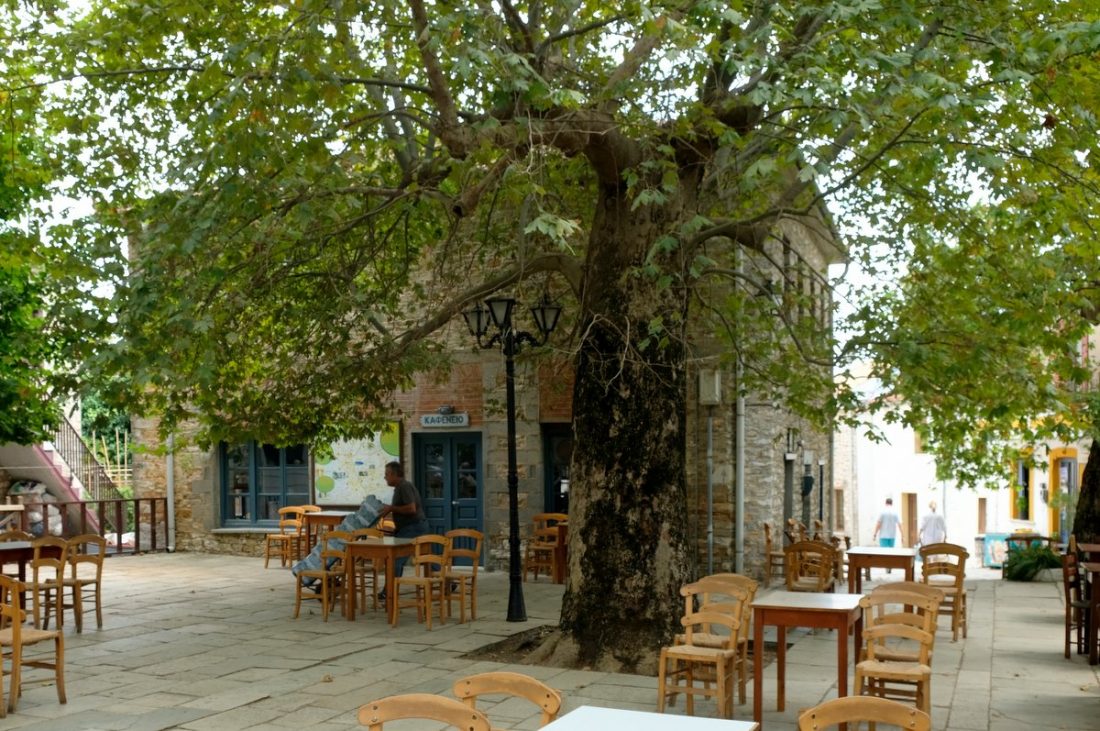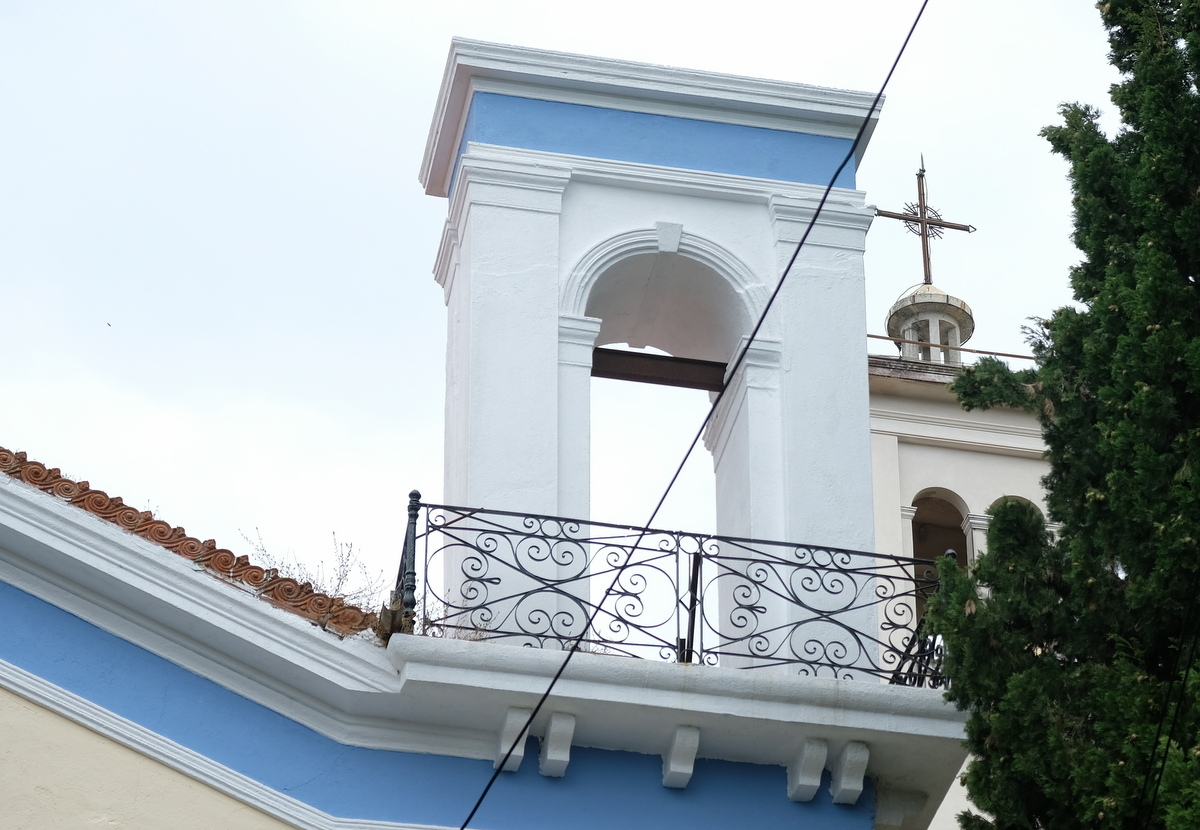
Discover and enjoy a picturesque mountain village in the south of the Greek peninsula of Pelion, just a step away from the sea and perfect for those who love it when time stands still and nature blossoms. Lafkos in Pelion combines the wonderful atmosphere of an old Greek village with fascinating hiking trails, good food and short distances to both coasts of the green peninsula, also known as the home of the Centaurs.
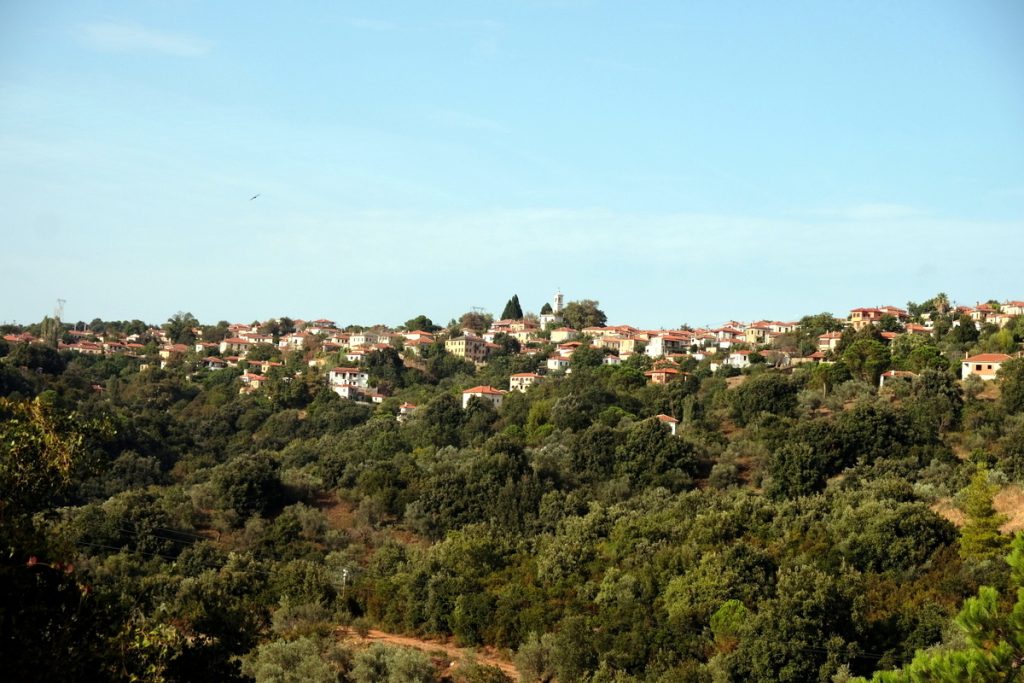
The mostly neo classic village is situated amidst green hills and represents a time when the region was trading well with olive oil, olives, fruit, chestnuts, silk and wood, transporting their goods to the sea on mules. You’ll love it in summer and during the winter, making the mythical home of the centaurs a strong memory.
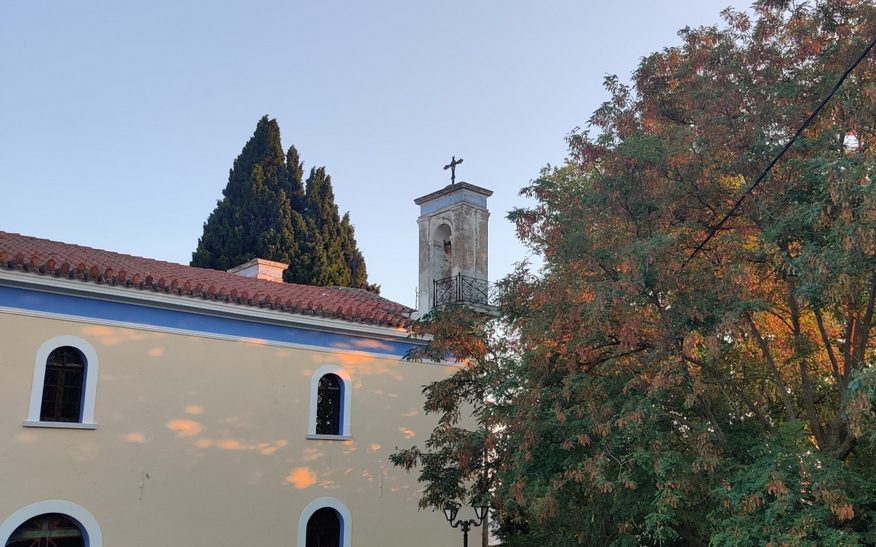
The village square next to the church with its old plane trees is still the heart of the picturesque village.
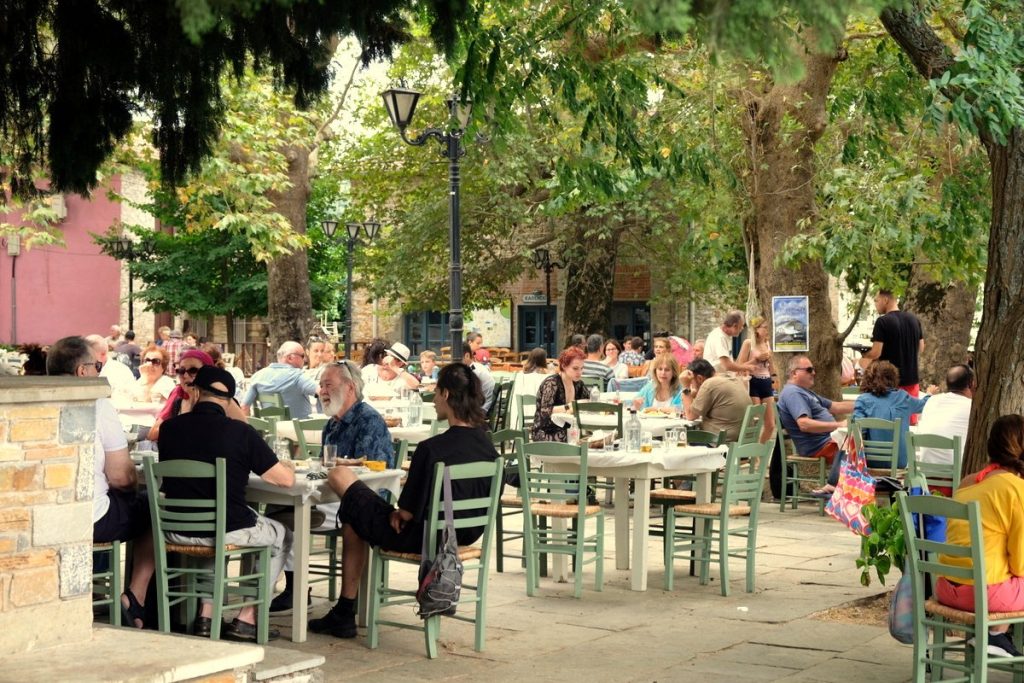
It is loved by locals and foreigners, adults and children. It is considered to be one of the most secluded and beautiful places in the entire Pilion.
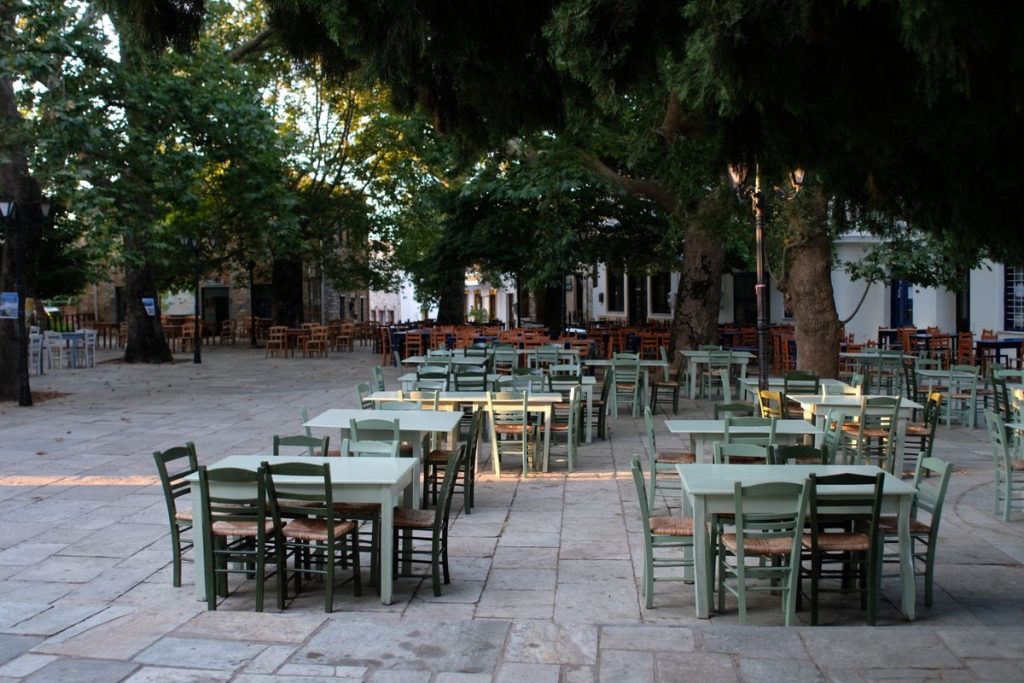
While the cars park on the edge of the village and the children enjoy their freedom, dogs and cats peacefully duke it out over who gets which table.
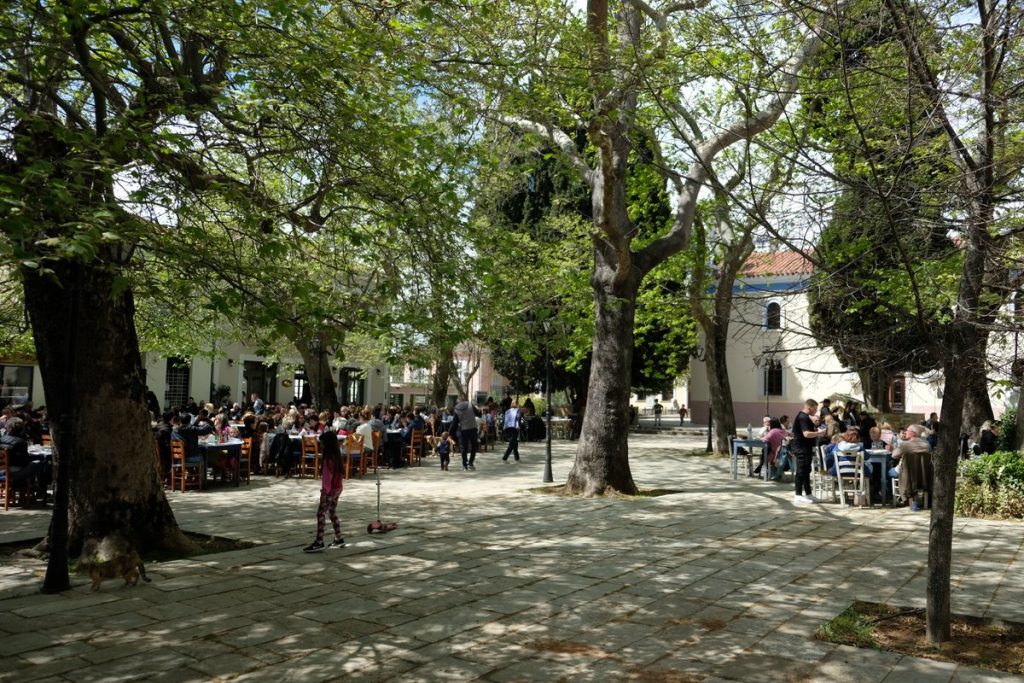
On hot summer days, a cool breeze usually blows from the northeast, best felt in the wonderful “Kafodion” in the very south of the village.
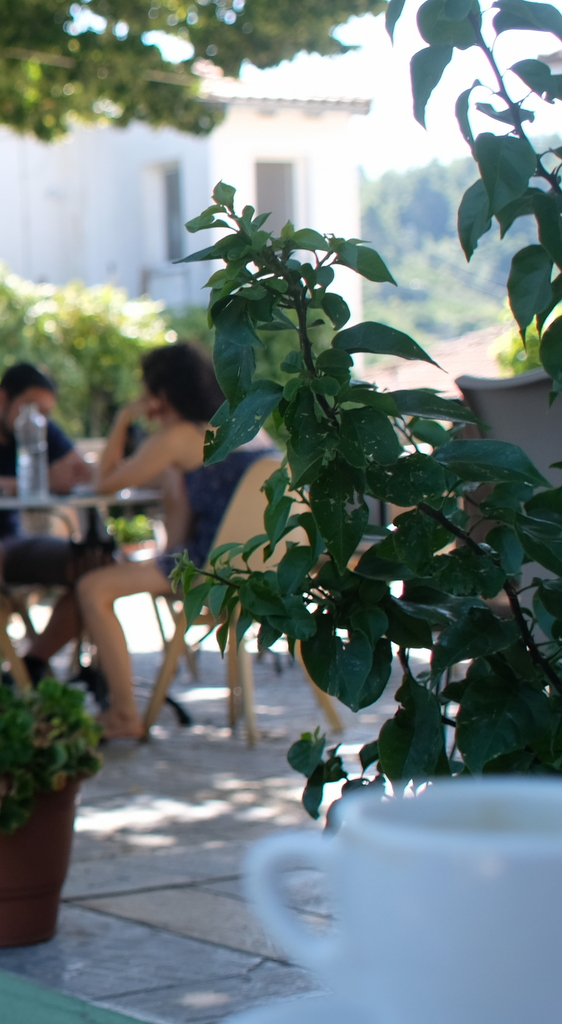
Lafkos in Pilion breathes the nature that completely surrounds it.
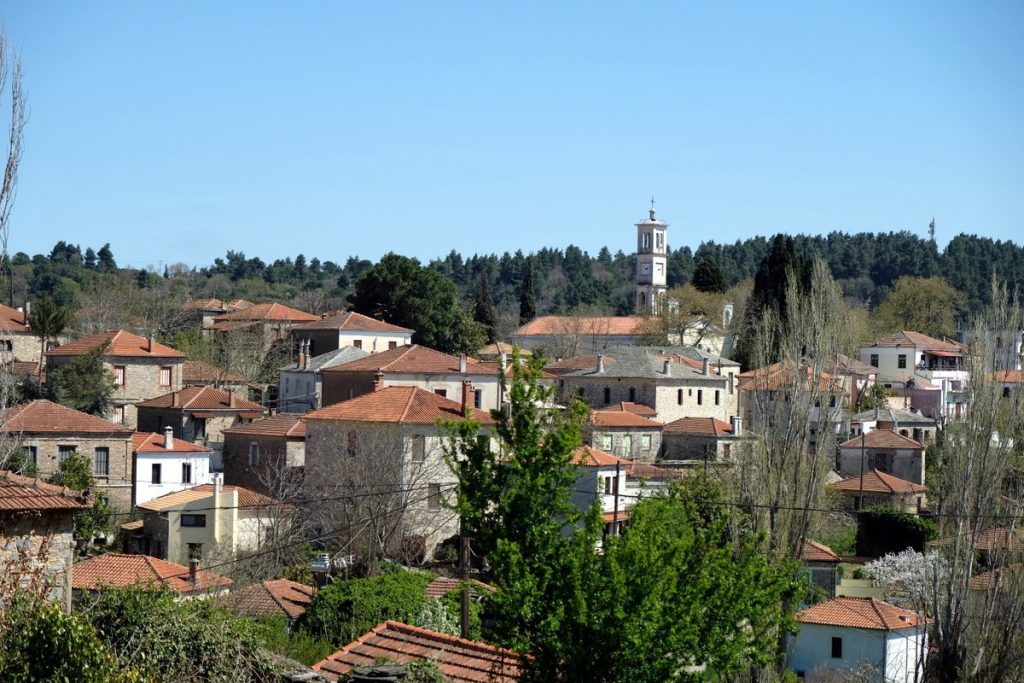
Fruits of man
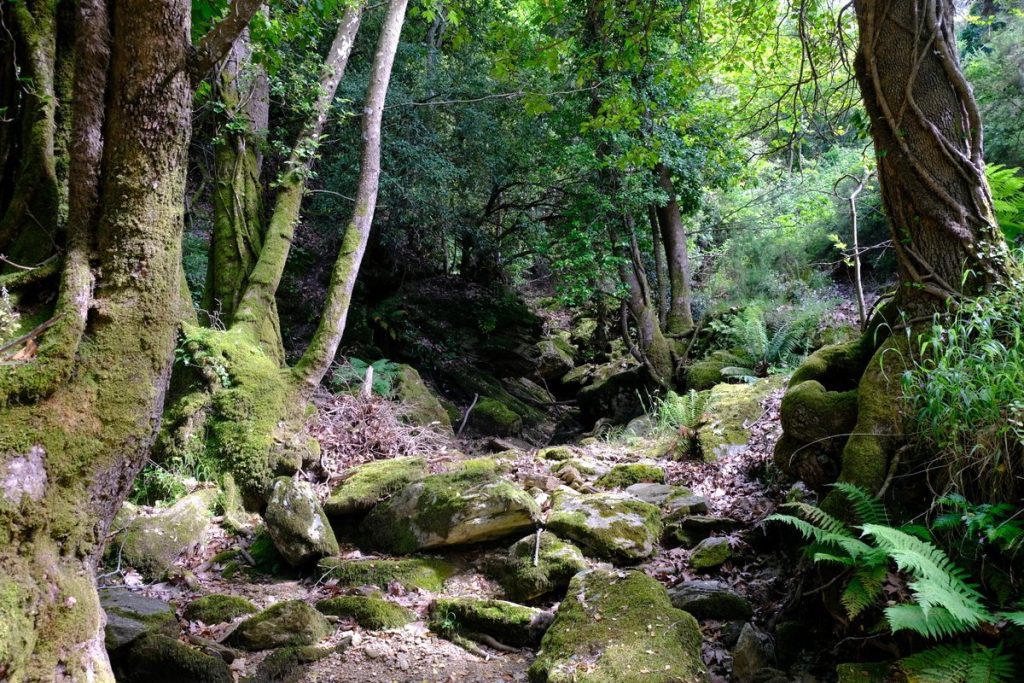
“To kalo to Palikari, friskei panda ena dromo.” A good boy always finds his way, they say everywhere in Greece and also everywhere in the South Pelion, which is full of beauty and rich in natural wonders.
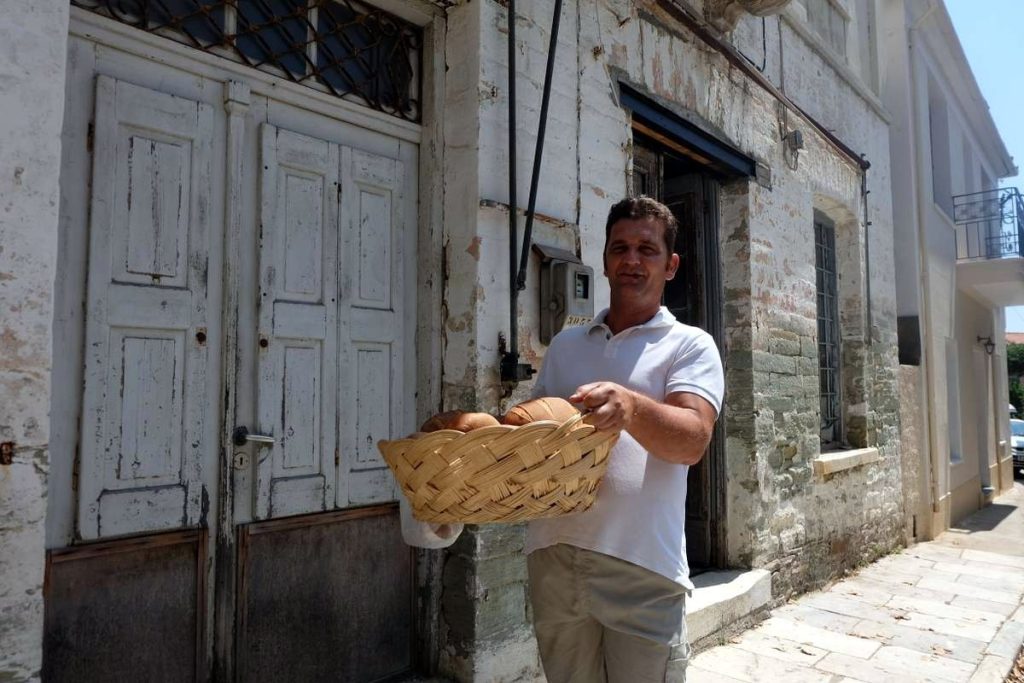
In Lafkos, no one has to be great or have power over others in order to be happy or respected. Everything is about measure and balance, in heaven and in hell, in good times and bad, to drift on the lake of life with a smile.
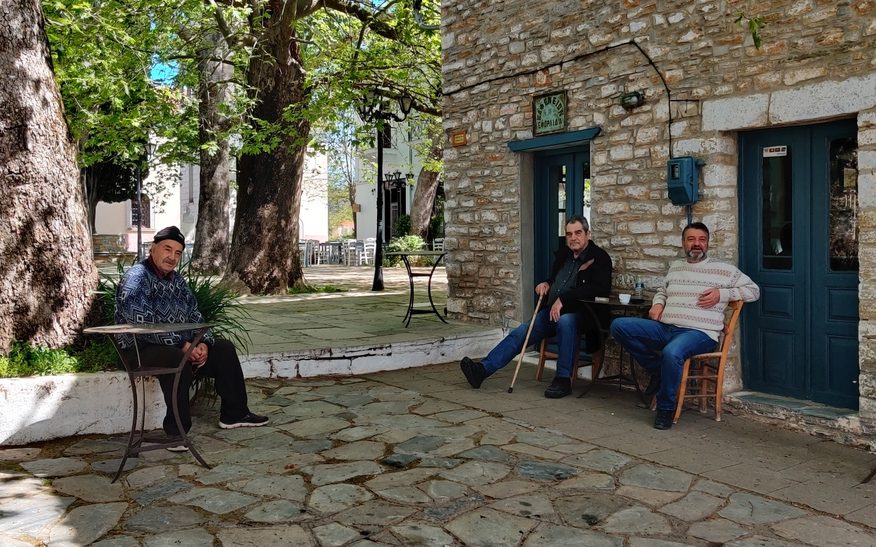
This freedom established due to the self-governance that has characterized life in the mountain villages of Pelion for centuries. That’s why everything in the villages takes place almost at eye level. Dionysus, the divine child, still exists and the Land of the Centaurs is certainly not the place where this species dies out first. In fact, they do Lafkos to one of the most authentic and resilient villages in Greece.
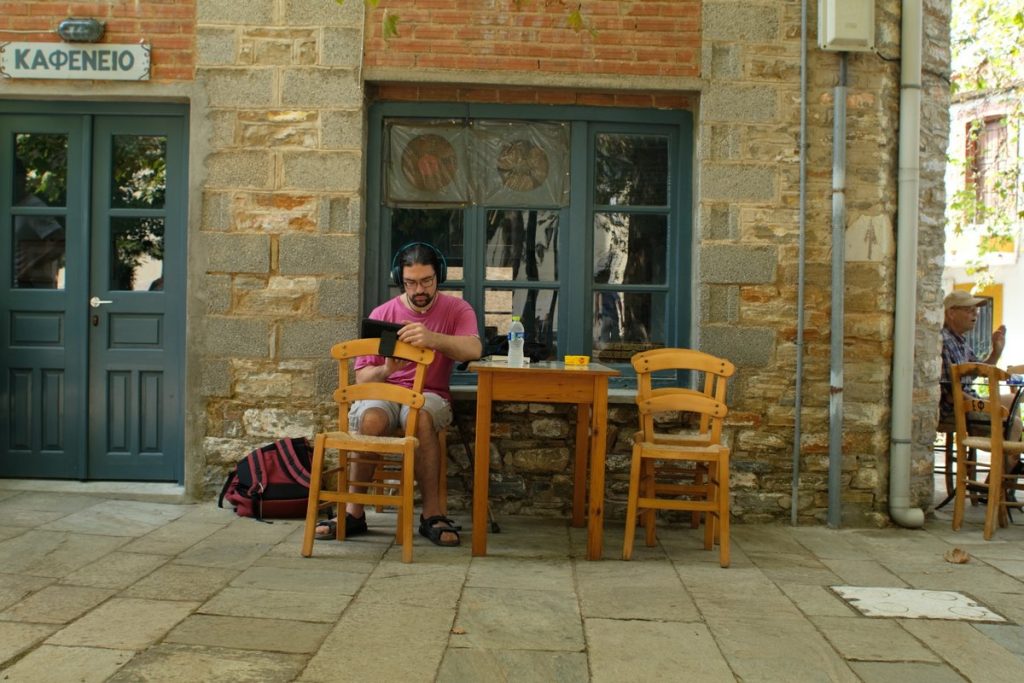
Although the most authentic village is small and the population dwindles a little every year, the craftsmanship is still strong and continues to go from hand to hand.
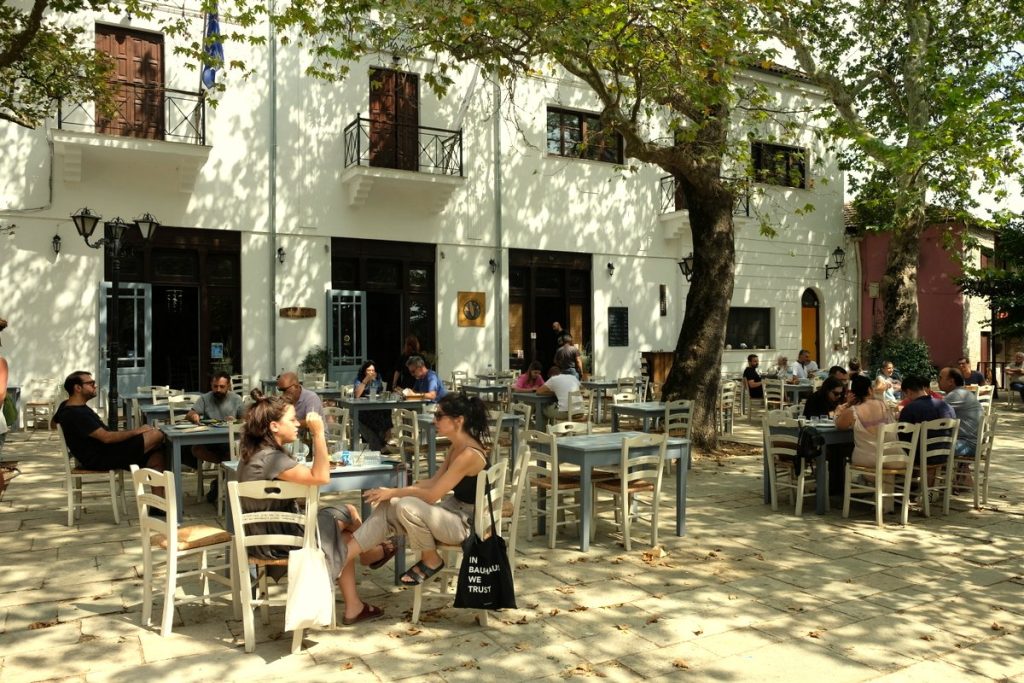
Handicrafts and tourism are the barrel rings of this small world. In co-operation with the Greek way of life, it is possible for the children, the older people, the confused, the sick and the strangers to exist together without leaving anyone behind.

It is a law of nature that the bus does not leave until everyone is on board.
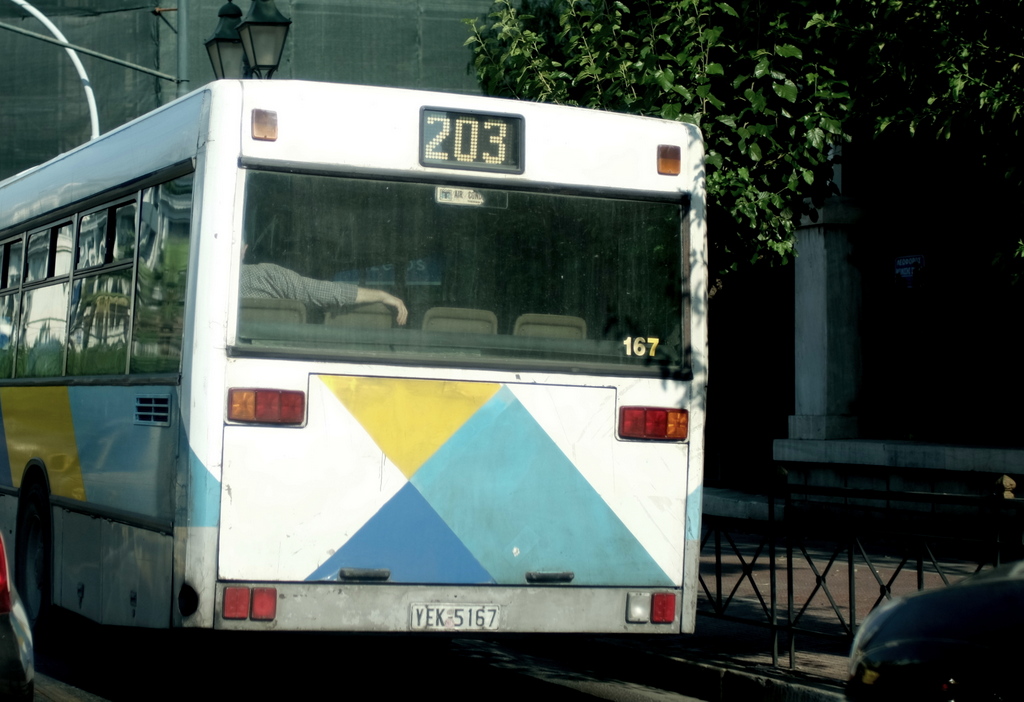
Almost anything gets the space and time to blossom and wither in dignity, to rejoice, or also to suffer.
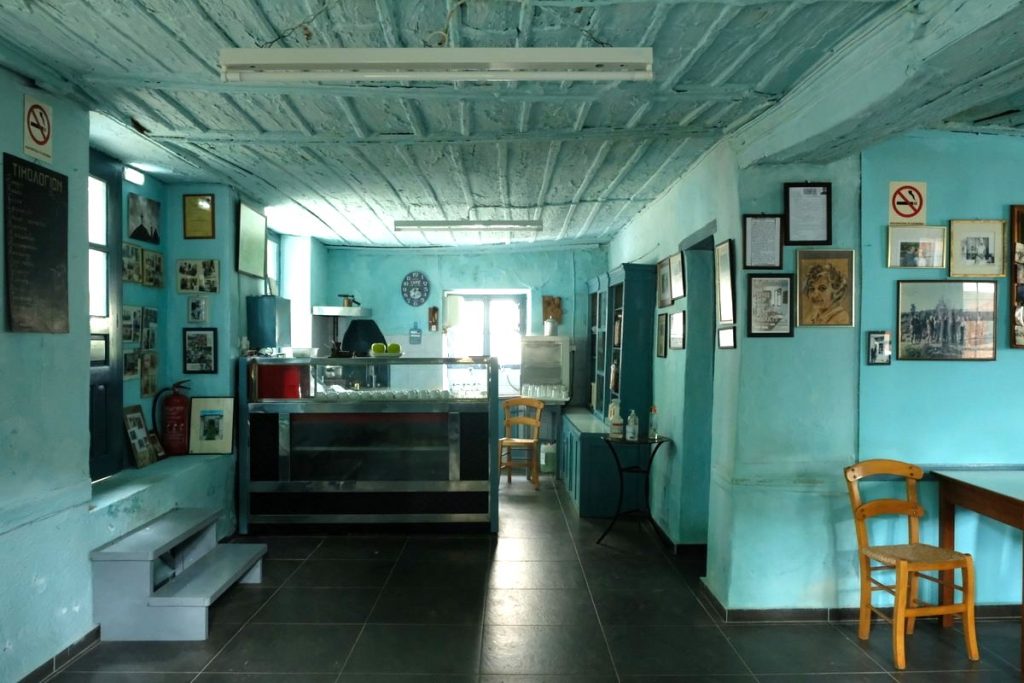
A kind of bus is also the picturesque “Kafenion” on Lafkos Square, which has probably been in continuous operation since 1785.
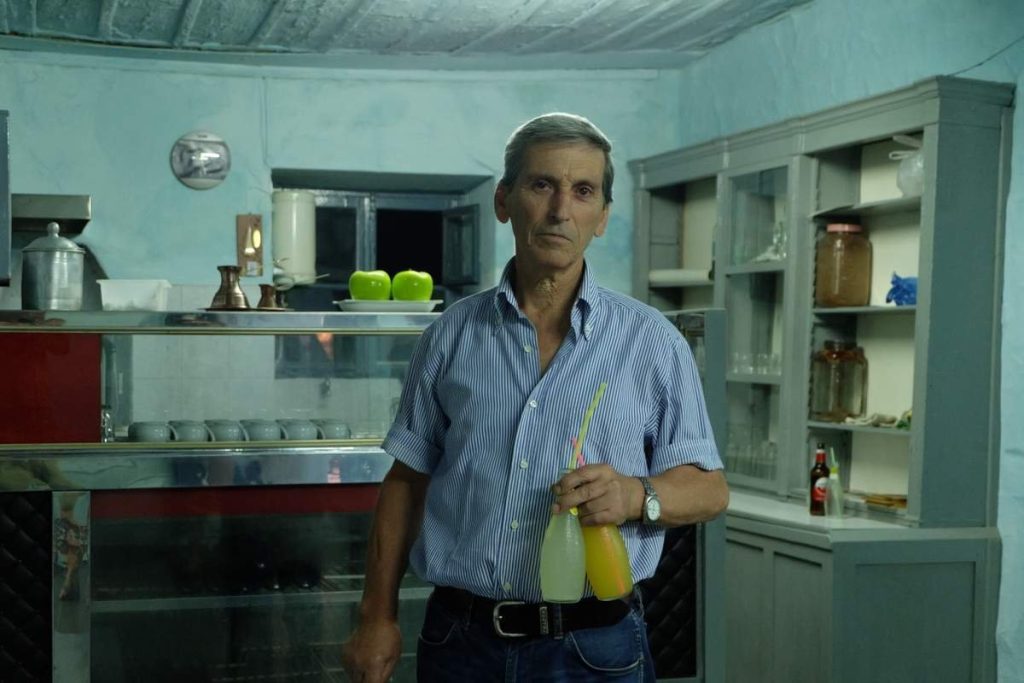
The newspapers say that it is the oldest coffee house in Greece, and you’re tempted to believe it.
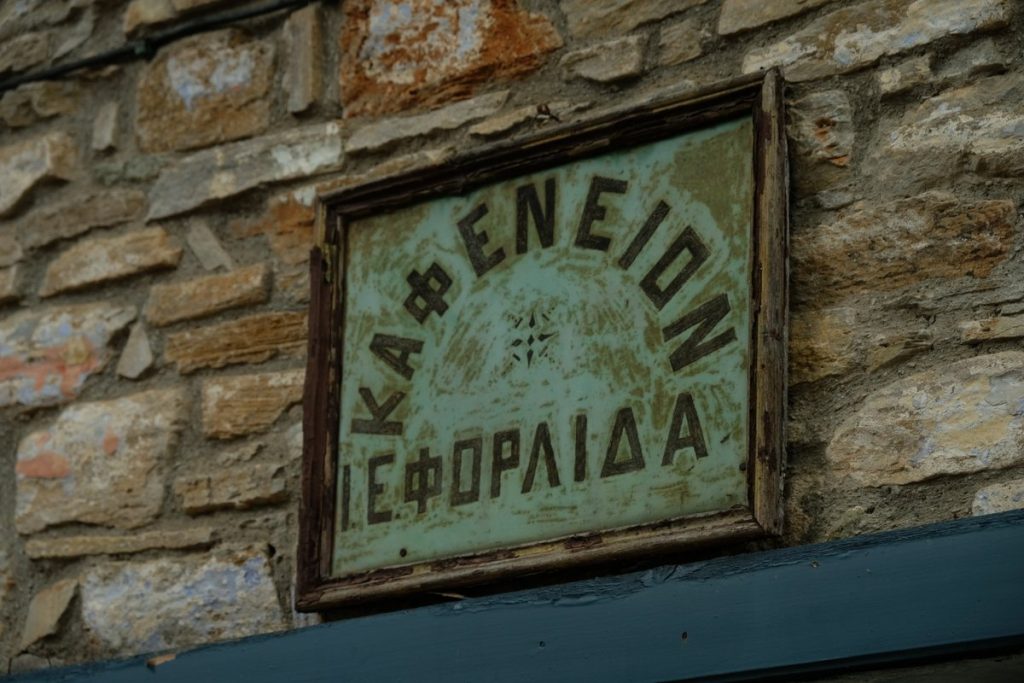
So, there are more than enough cultural reasons why Lafkos is a very nice and interesting place to visit the picturesque Pelion.
Lafkos is a perfect starting point for all kinds of outdoor activities, such as beach vacations, hikes, goat herding or historical excursions.
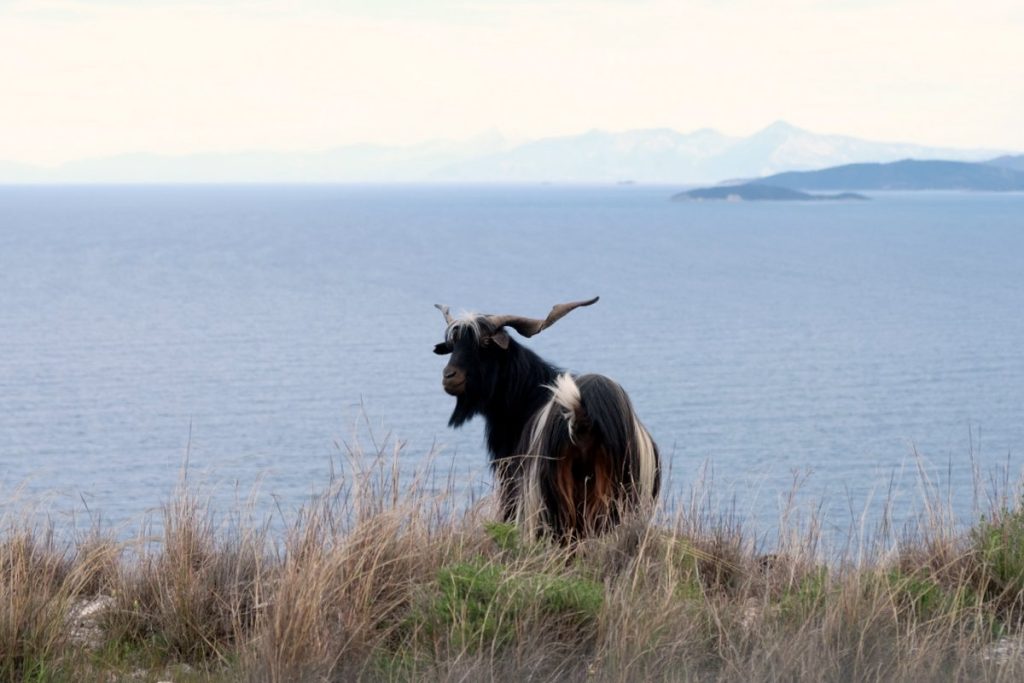
To the east, the Aegean beckons.
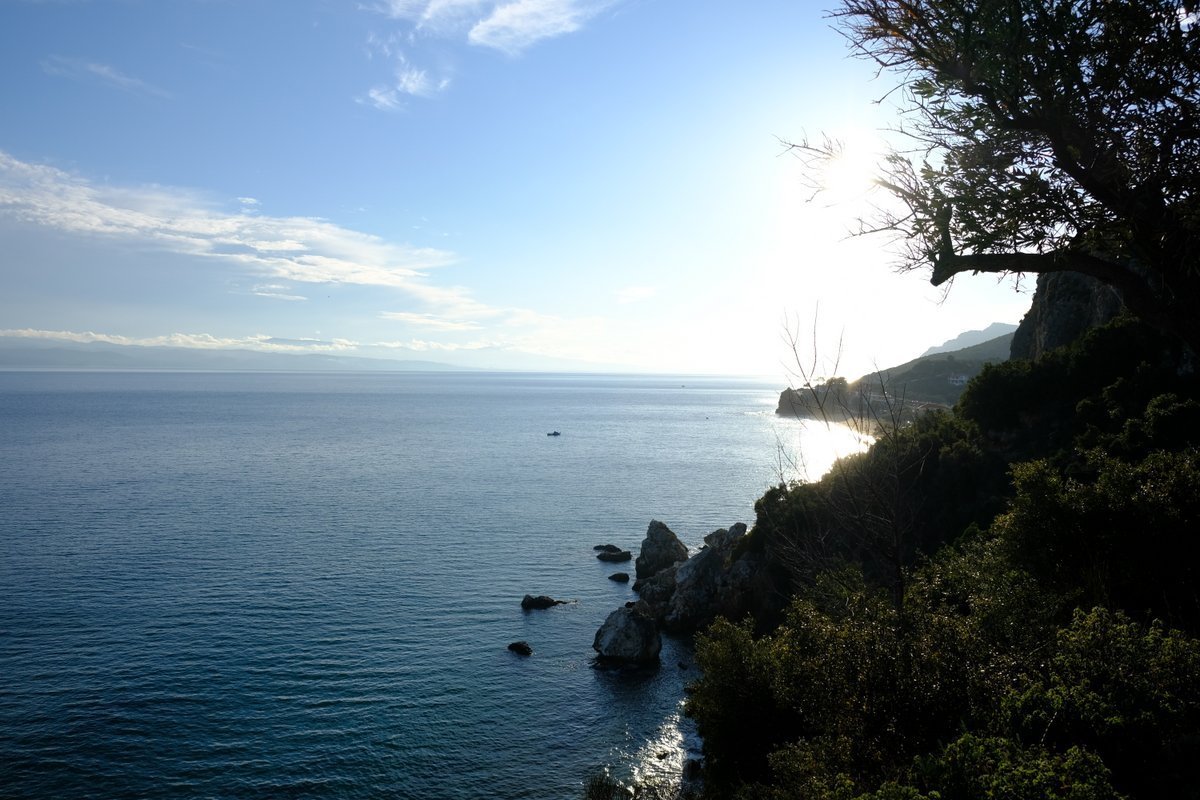
To the west, the Pagasitic Gulf.
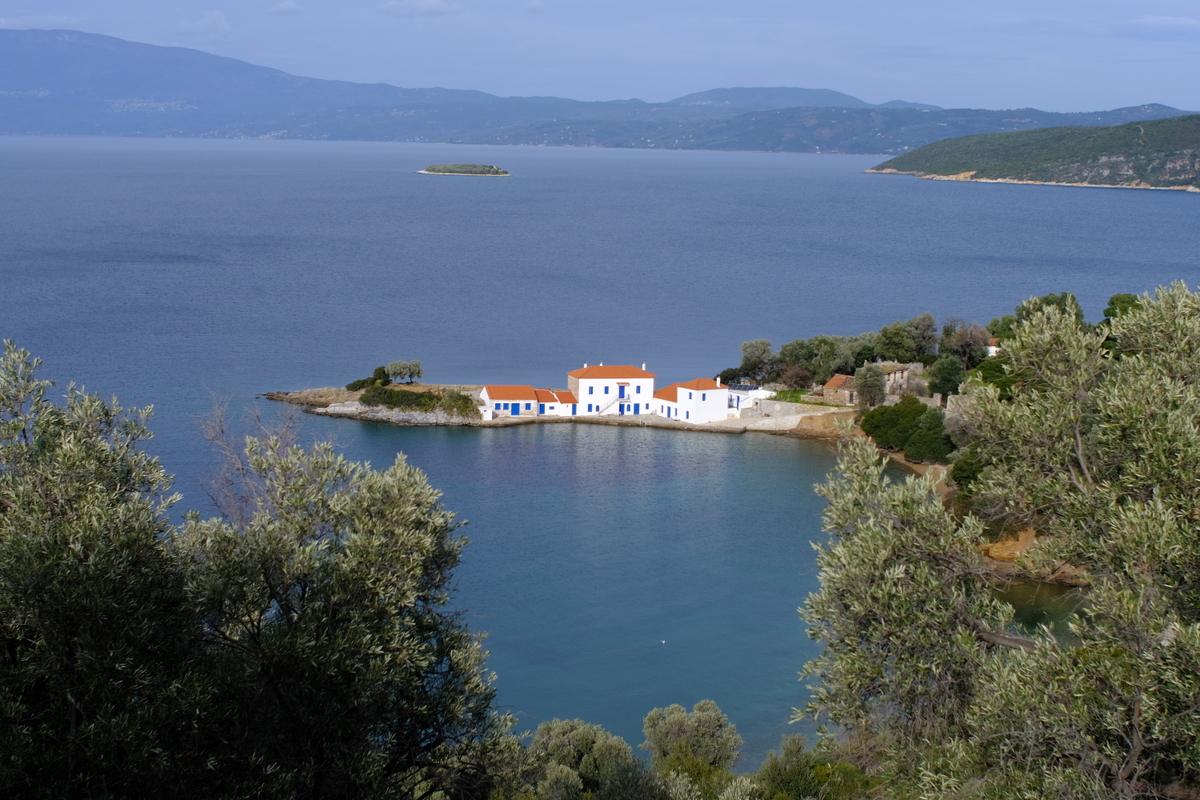
Picturesque beaches
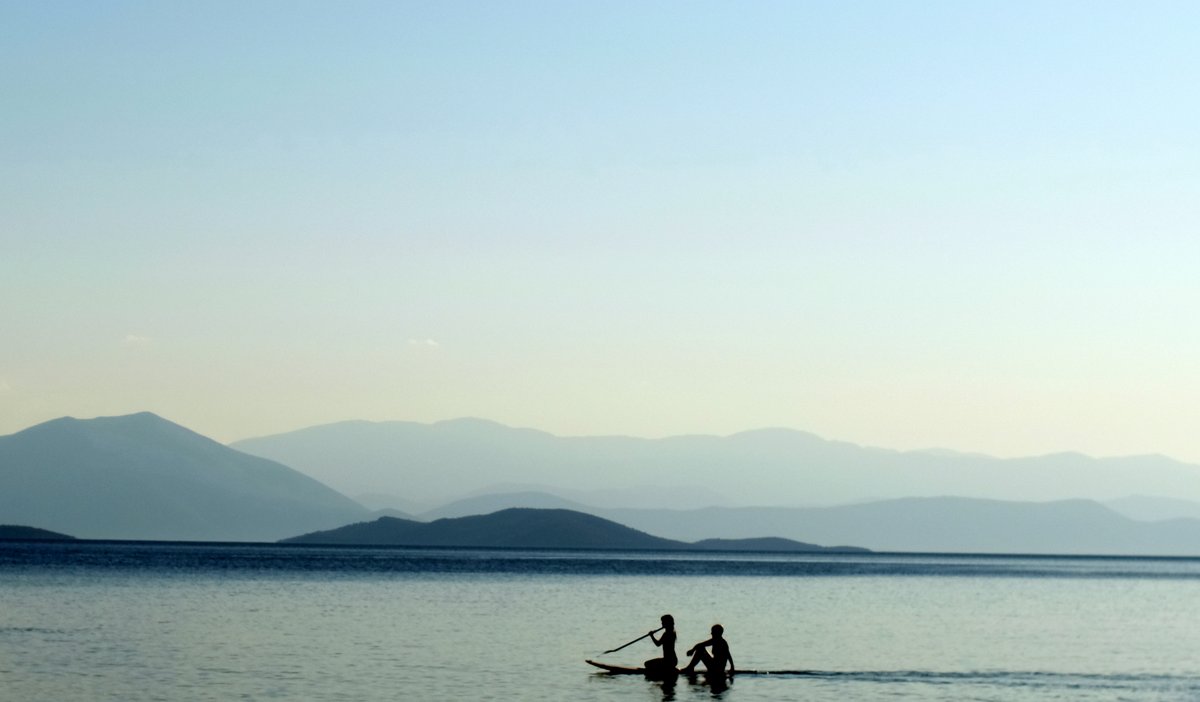
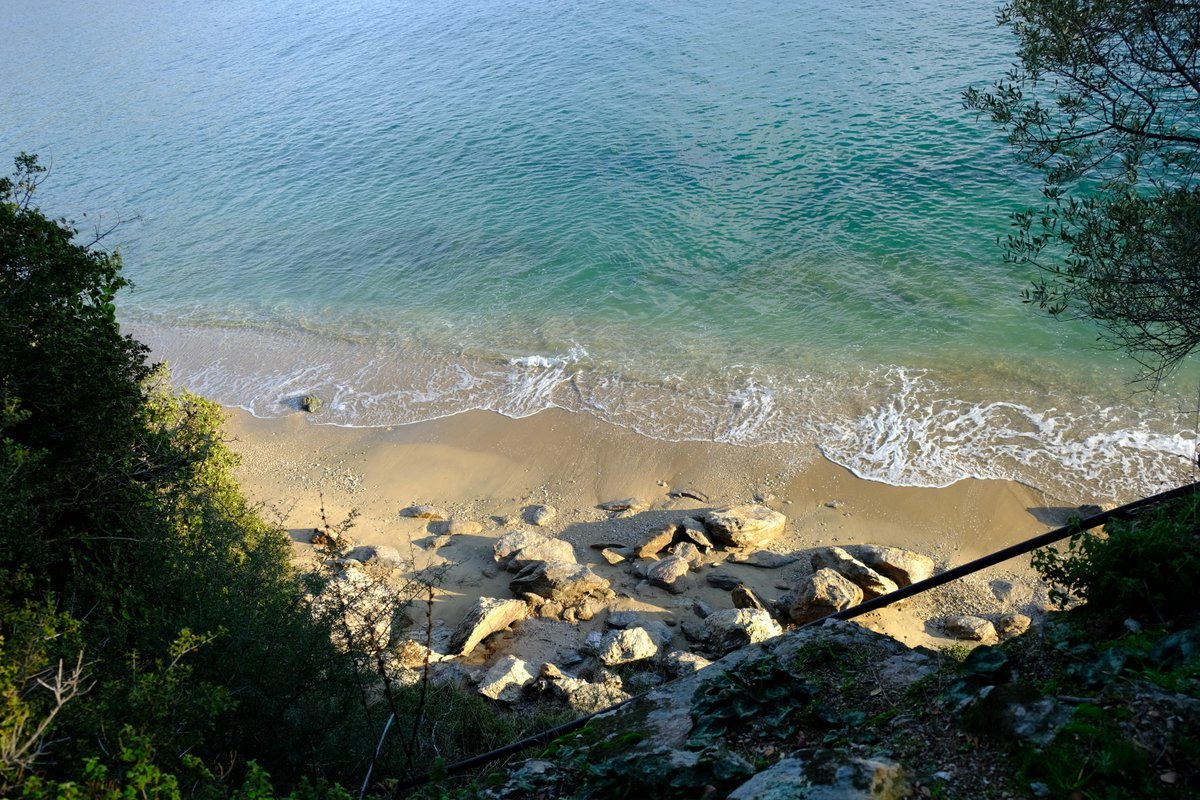
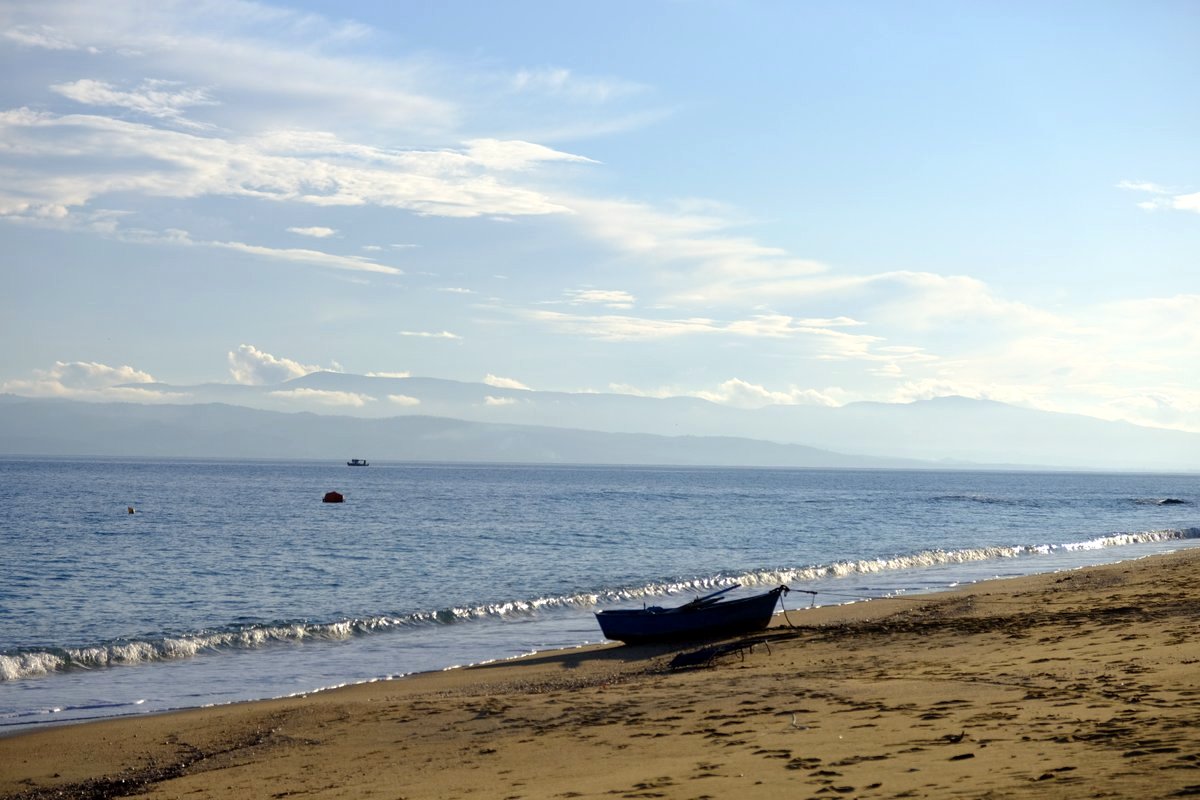
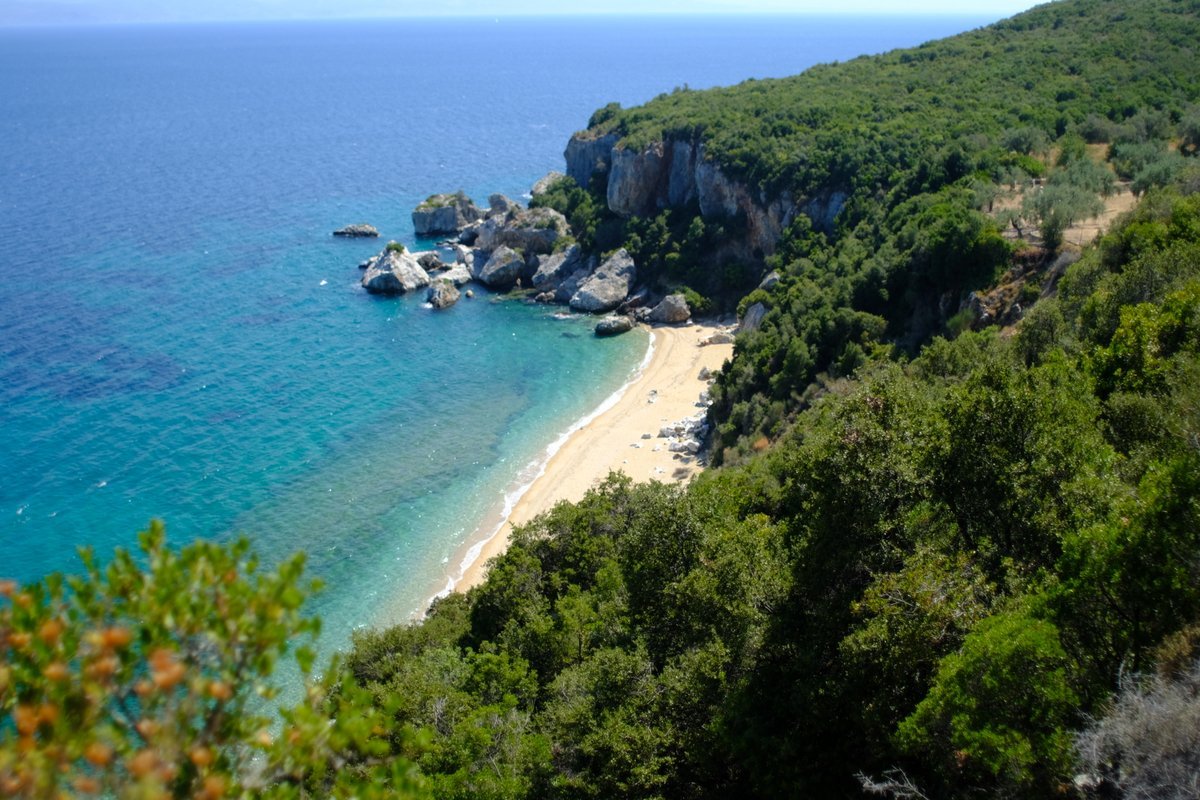
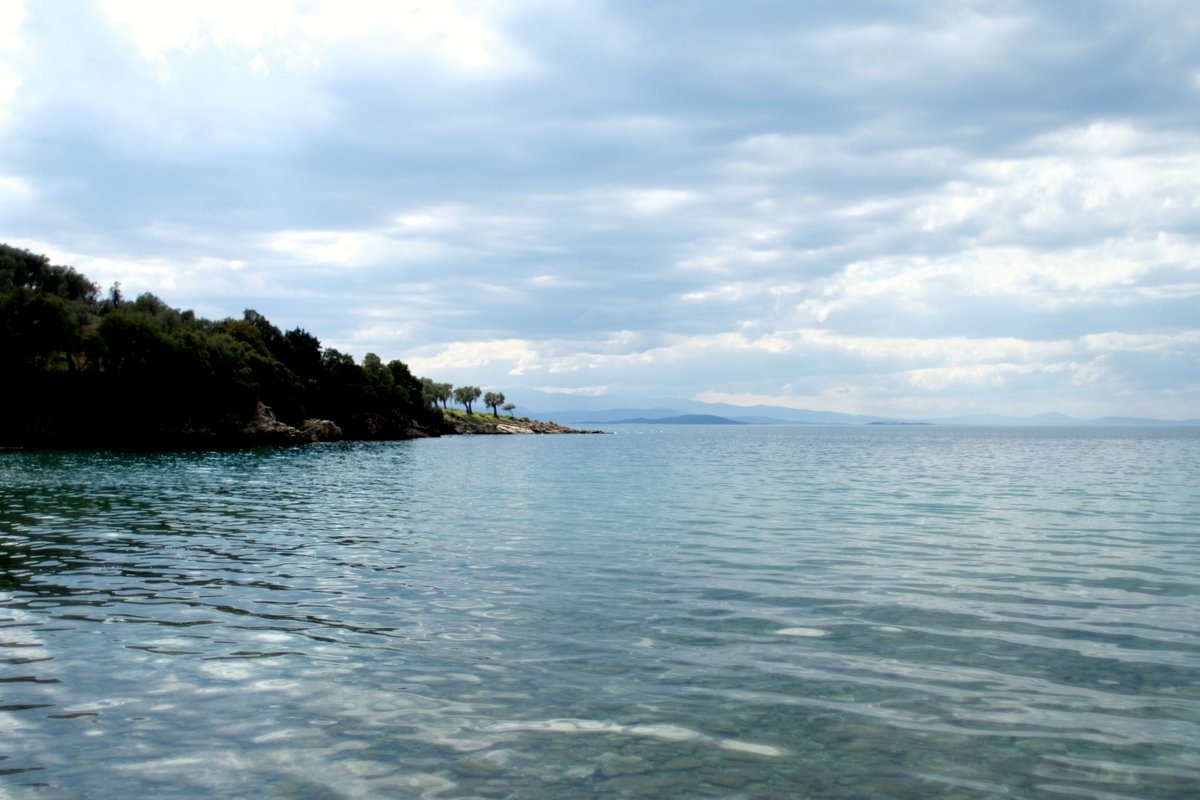
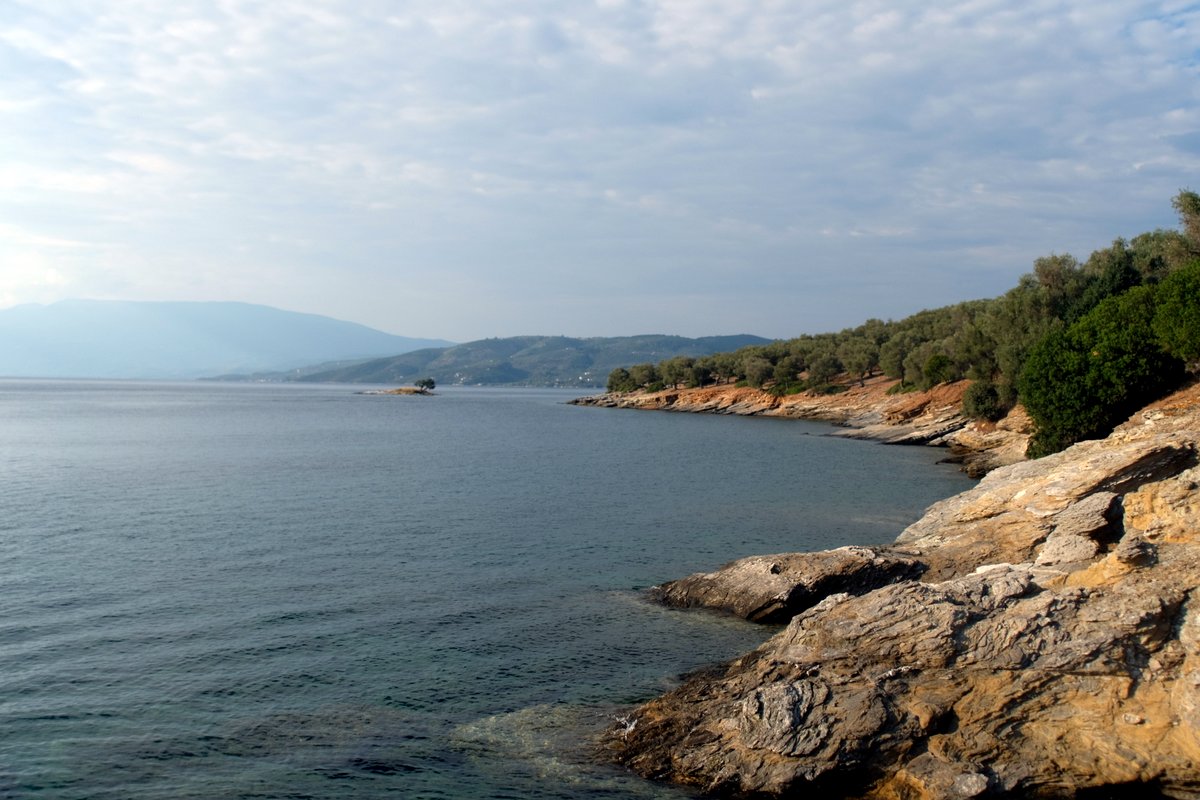
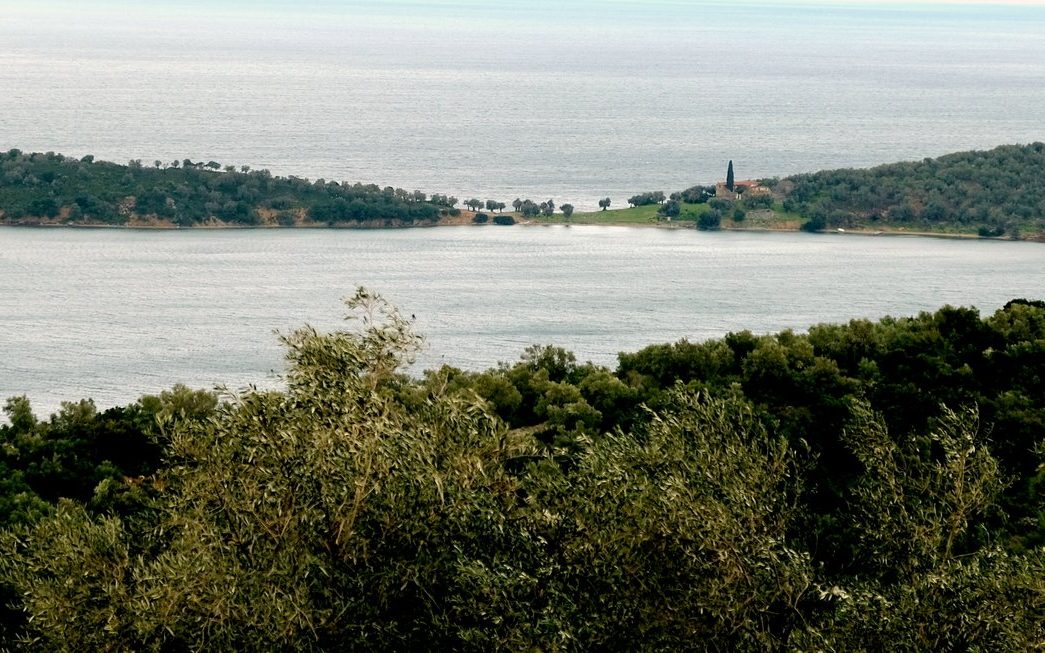
Enchanting nature for hiking
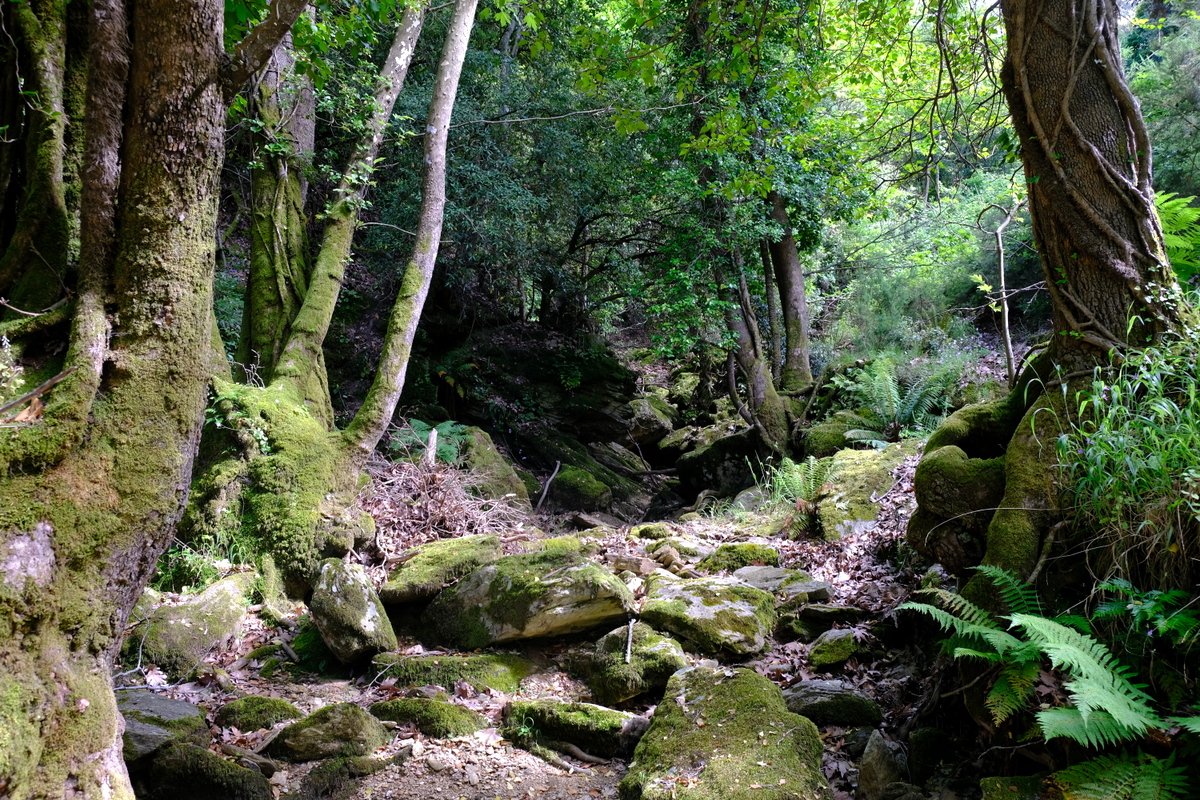
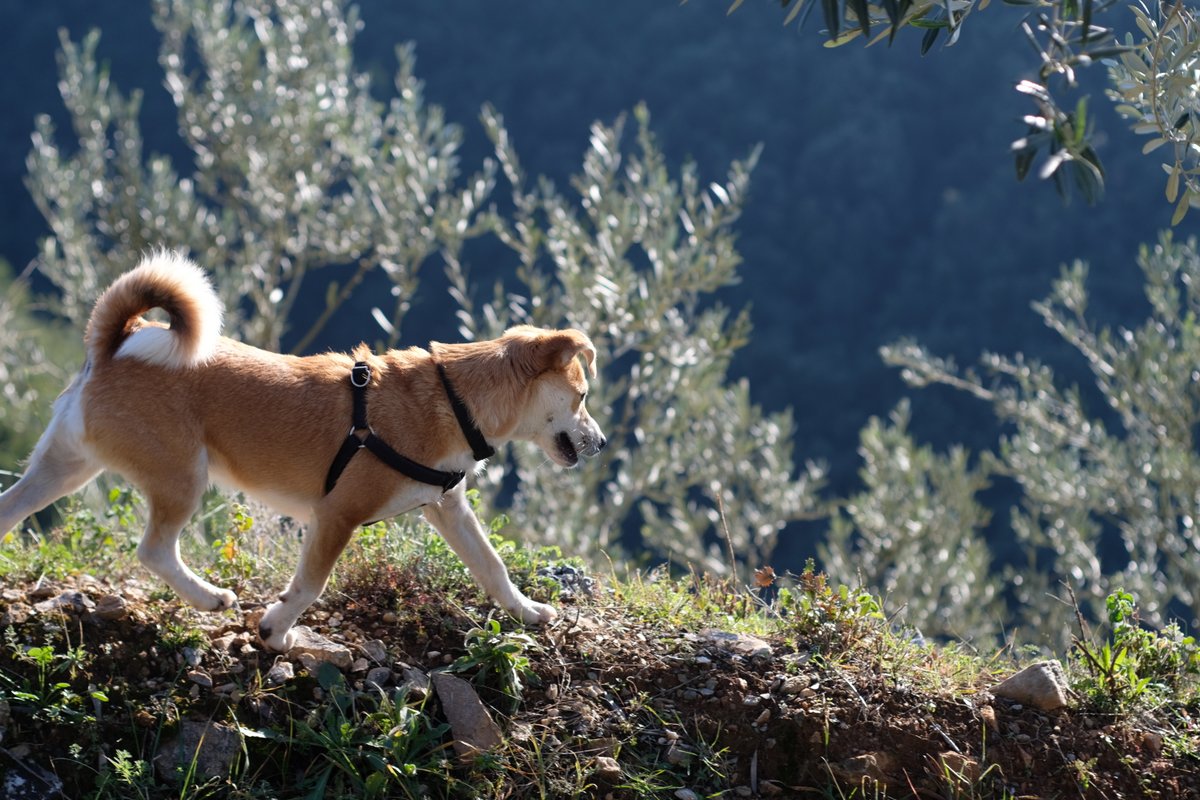
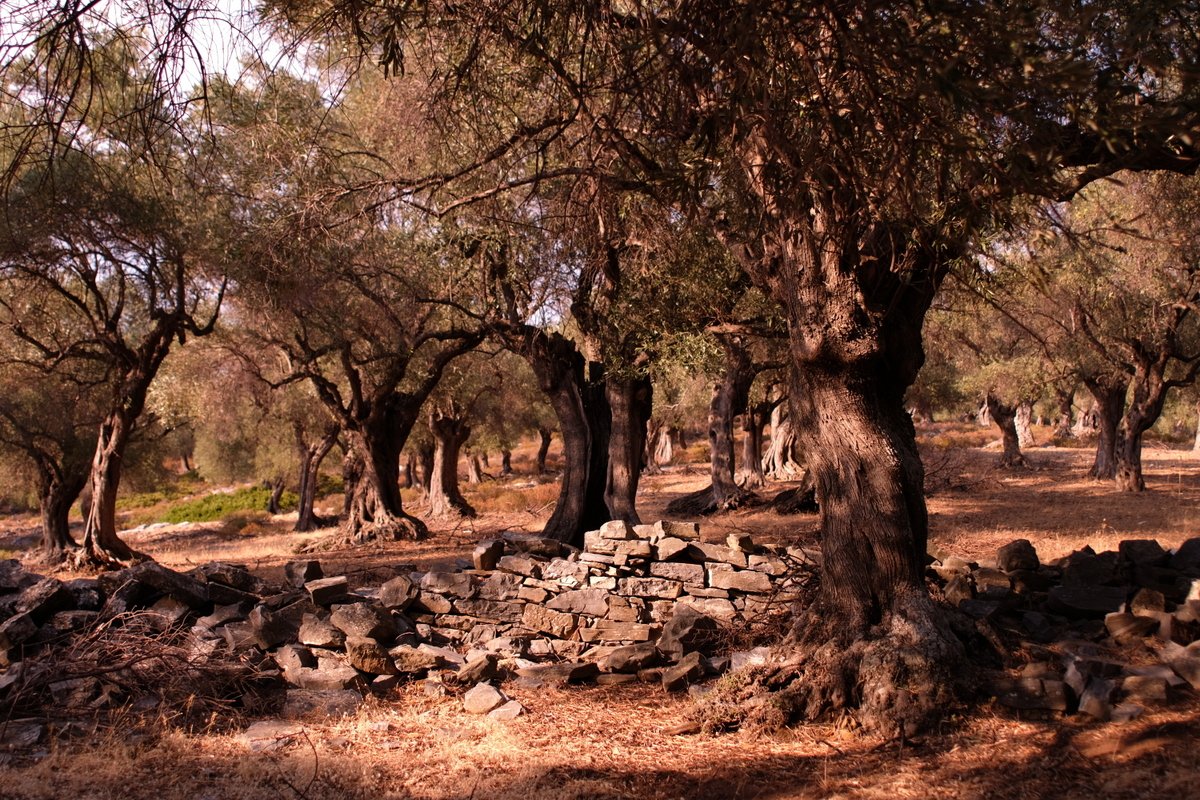
Endless magnificent biking trails
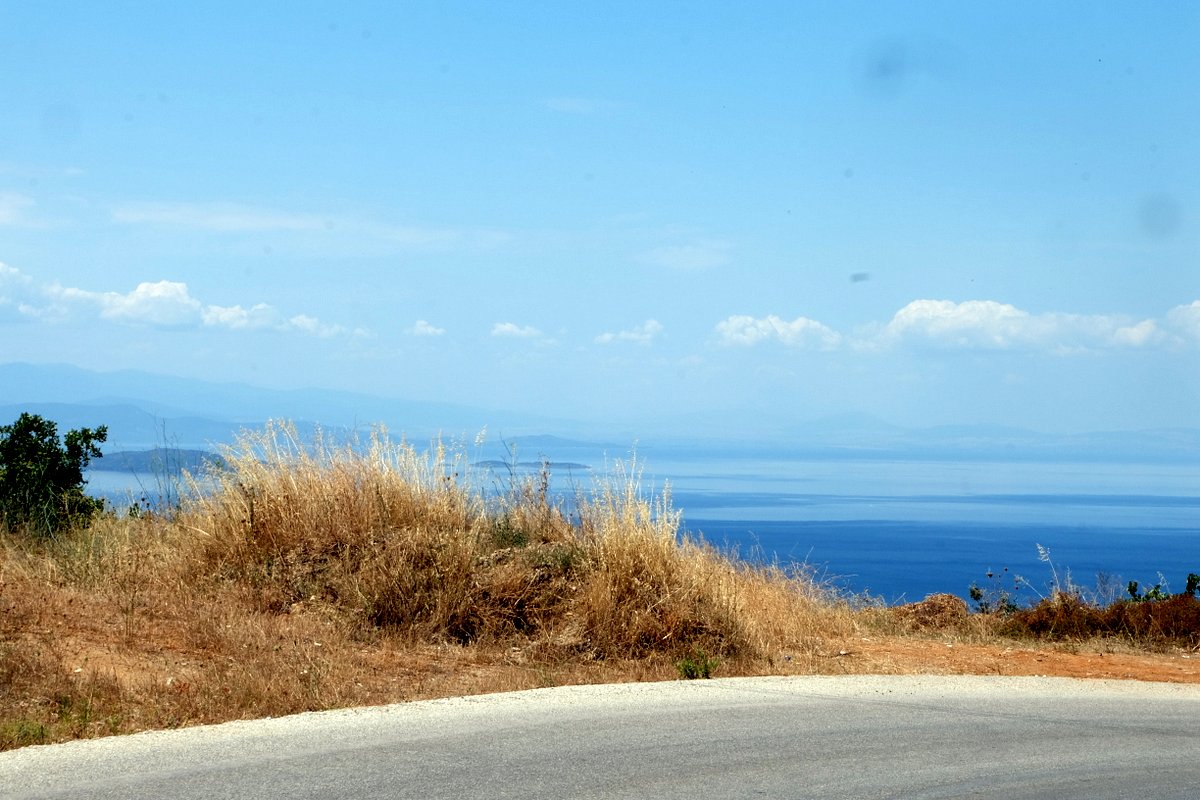
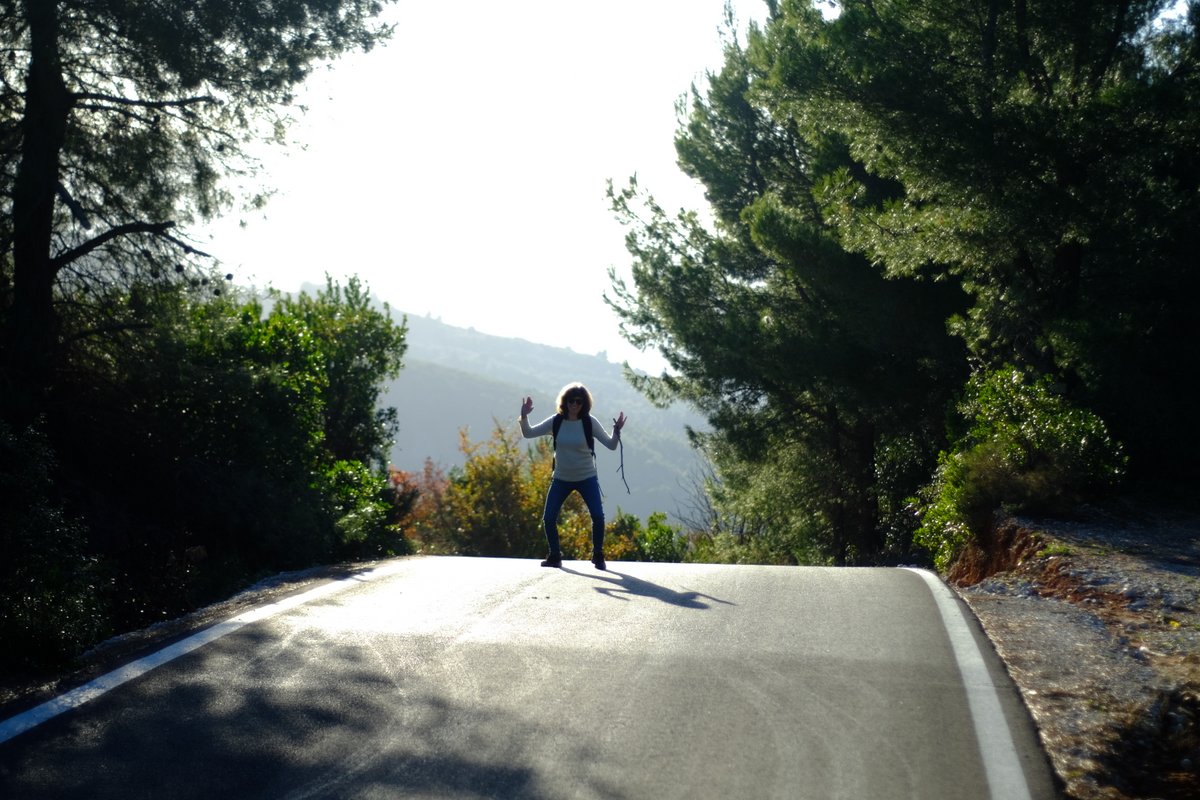
Peaceful coastal villages
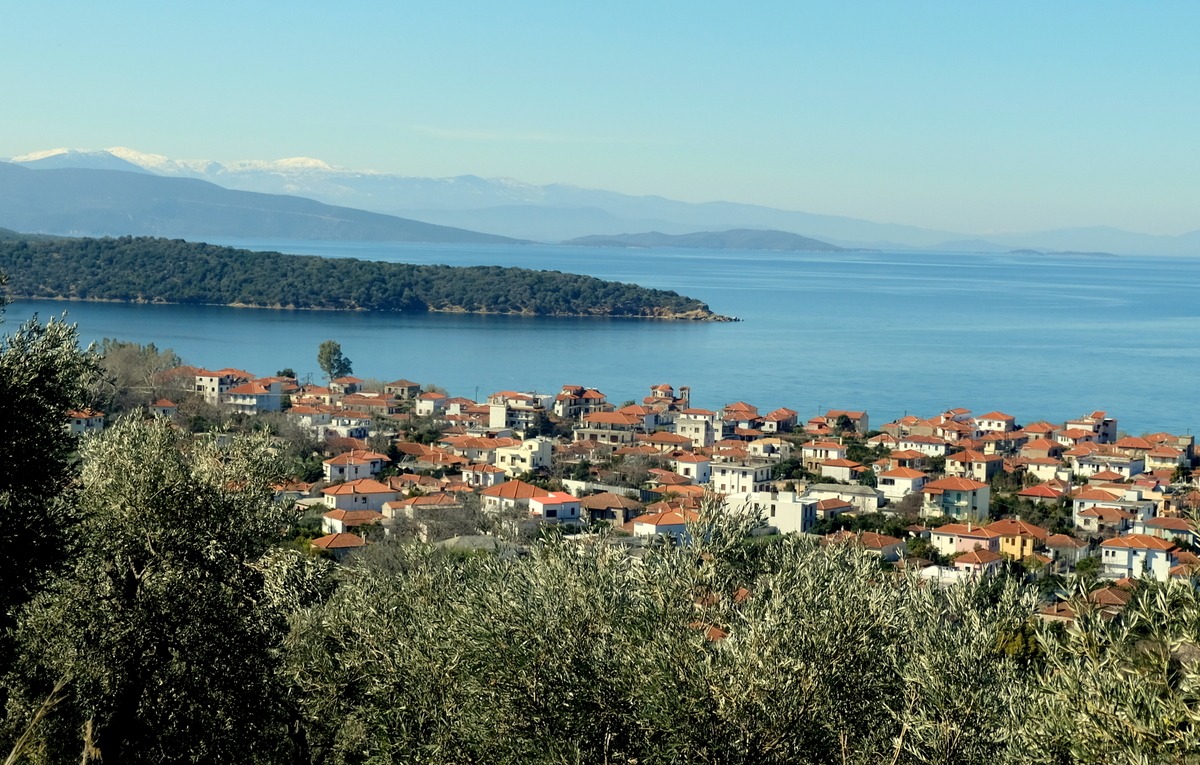
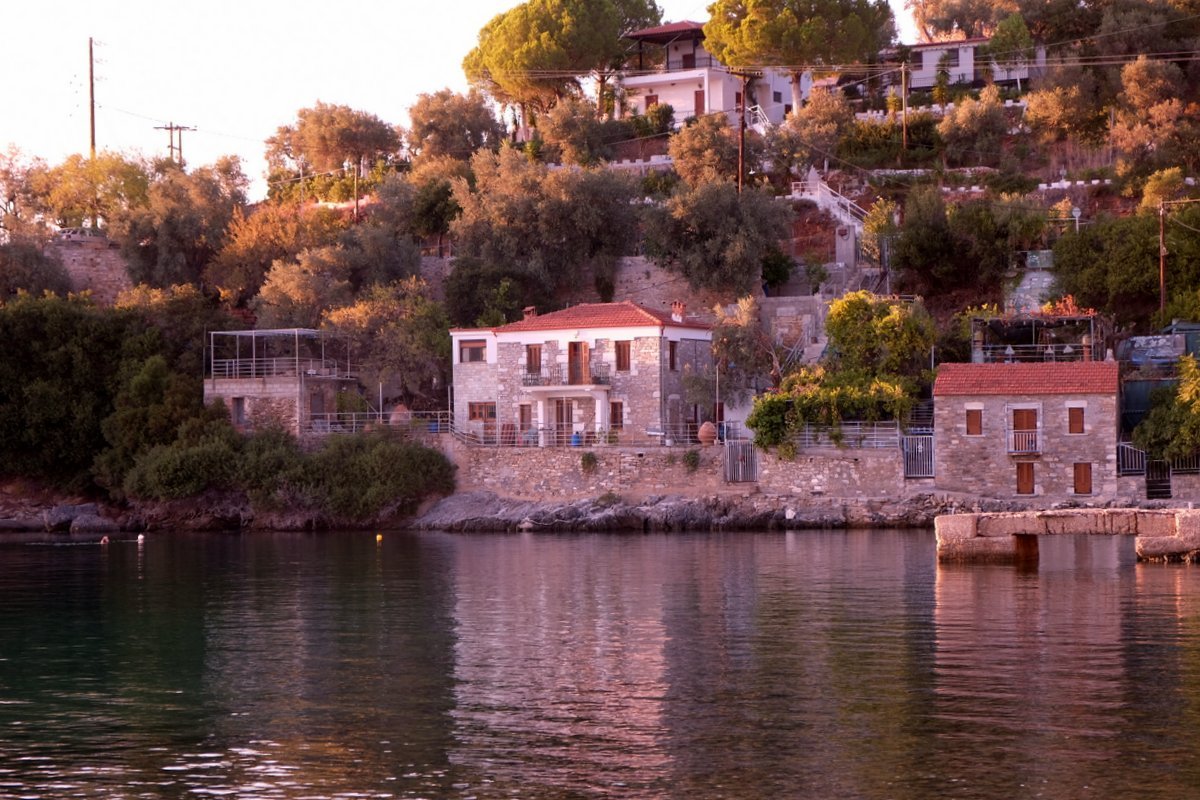
Magical mountain villages and everywhere many delicious restaurants
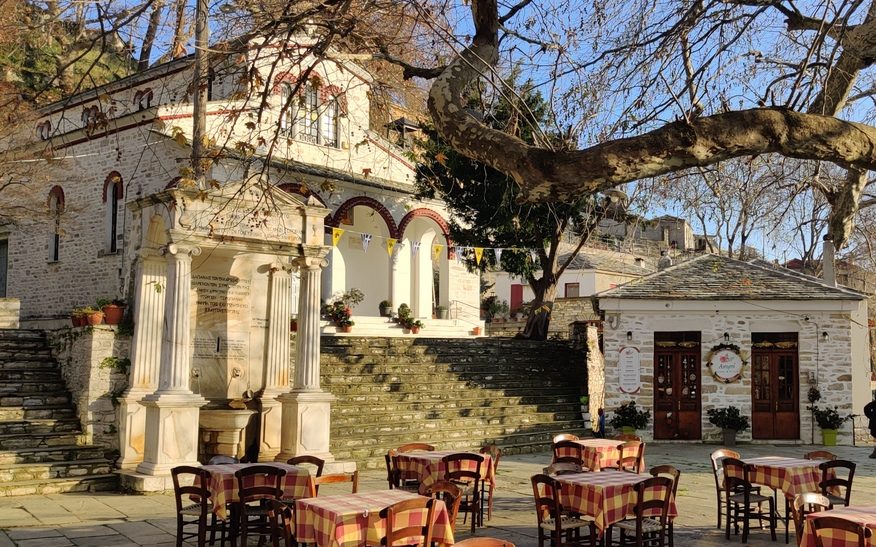
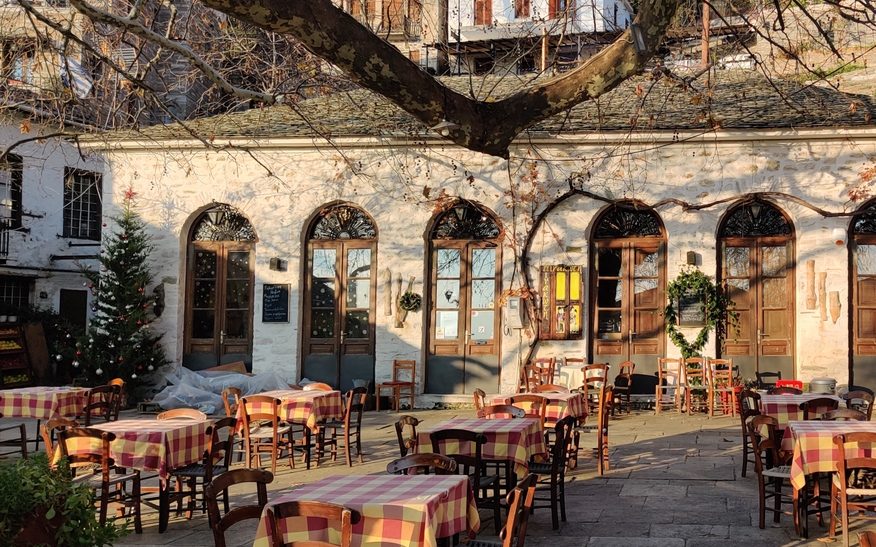
Volos
The large port city of Volos is also only about an hour’s drive away and leads through the beautiful landscape of the entire peninsula.
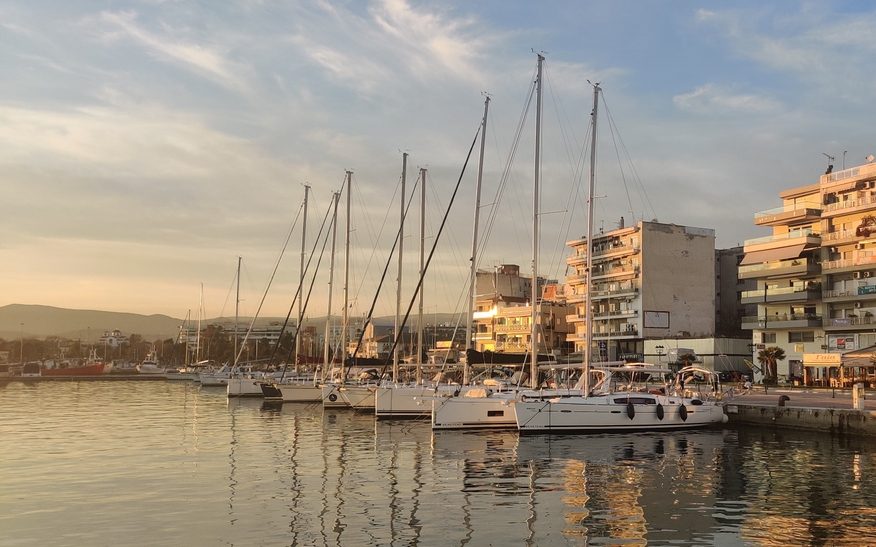
History of Lafkos
Historically, Lafkos is said to have been built in the 15th century, initially invisible to the pirate ships that sailed the area.
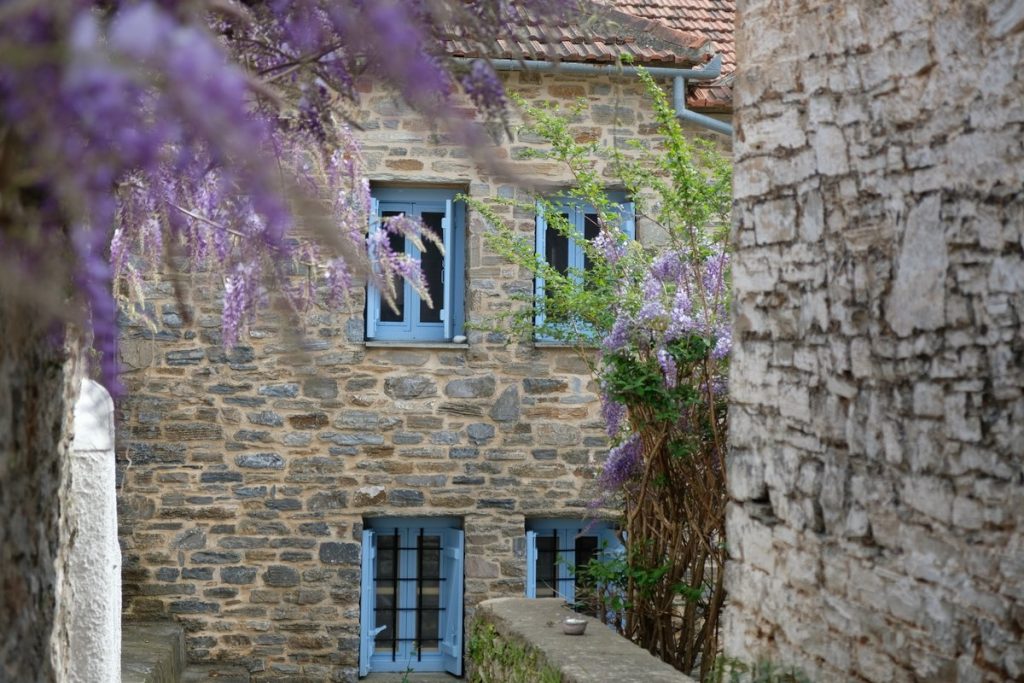
At the same time, the Ottoman foreign rulers allowed the flourishing quaint villages of Pelion mountains to govern themselves and demanded only a moderate tax in return.
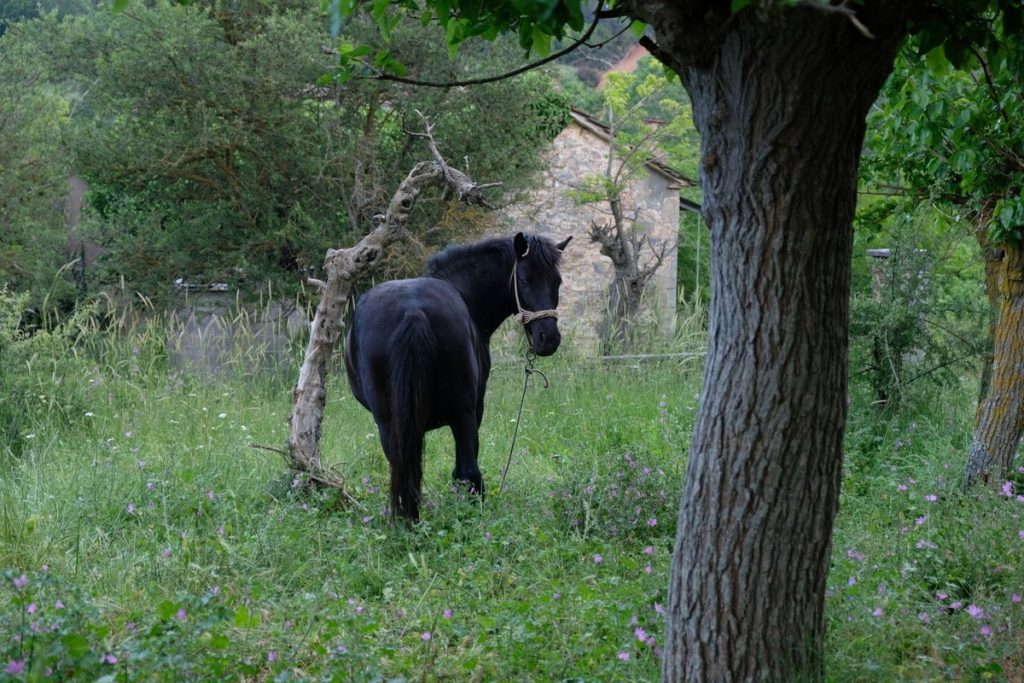
The privilege of autonomy is considered the basis for the prosperity that reached its peak after Turkish rule in the 18th and 19th centuries.
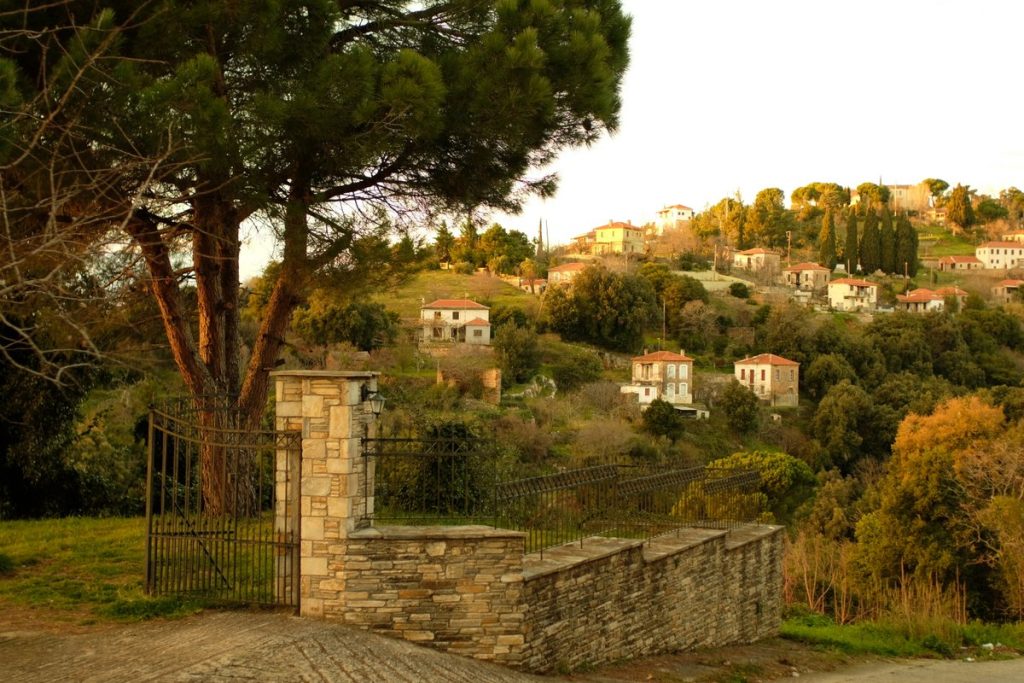
Most of the villas, monasteries, bridges, fountains and paved walkways that we admire today were built during this period.
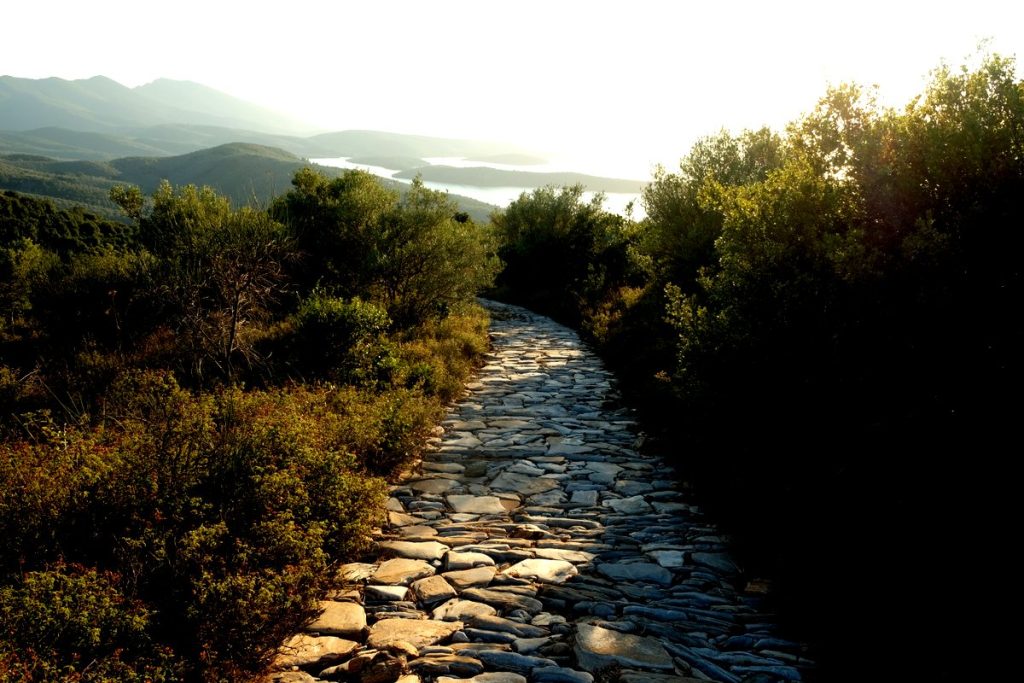
Many houses tell of the flourishing Ottoman period, but most are neoclassical, due to the many Philhellenes who settled on Pelion after the 19th century.
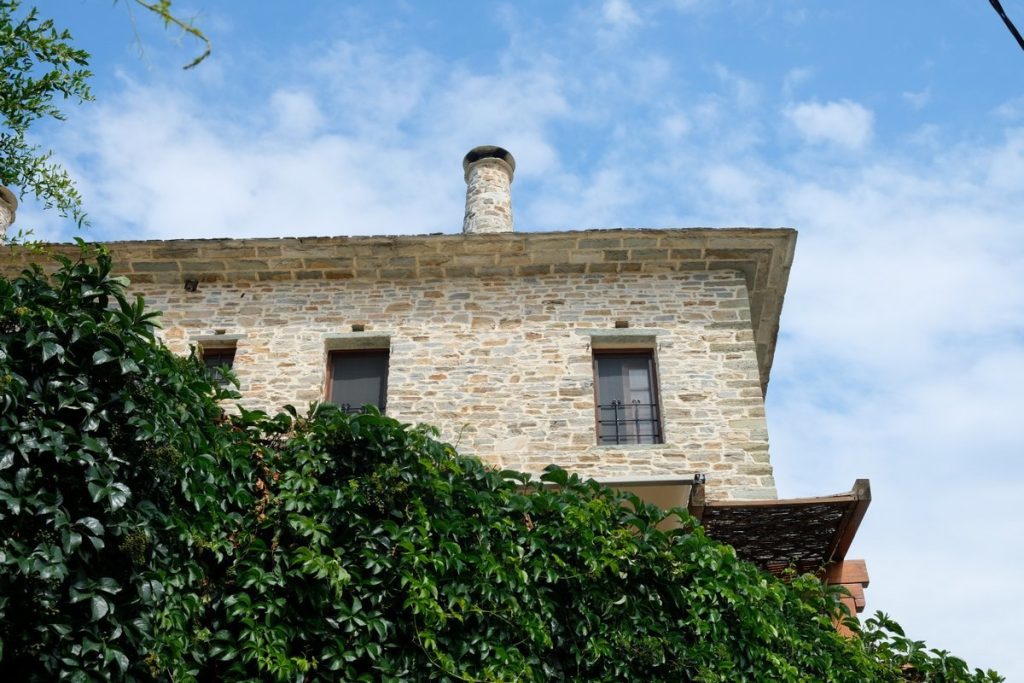
During the Second World War, Pelion was occupied by the Germans. The massacre of Drakia in particular reminds the Piliots of this time.

On this tavern floor in Lafkos below, reckless SS members lit a fire to keep warm during the Second World War.
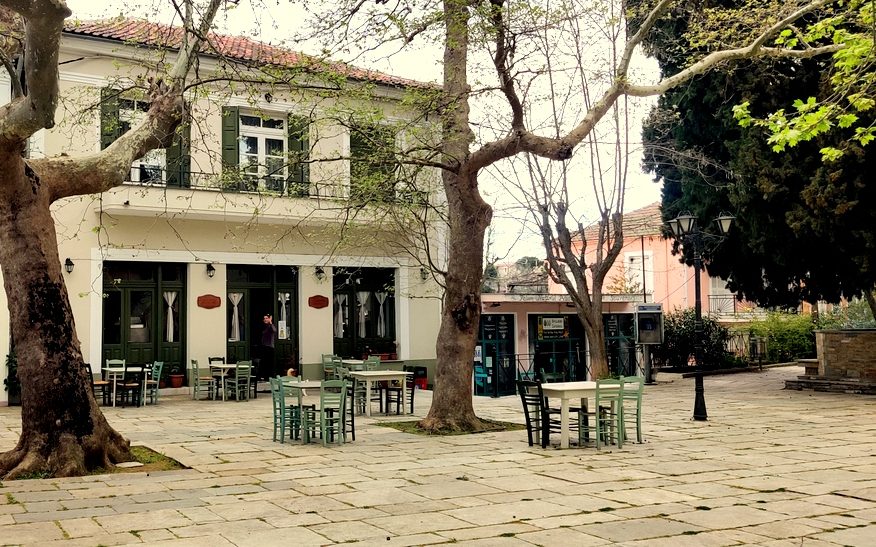
To date, no one has paid for the damage.
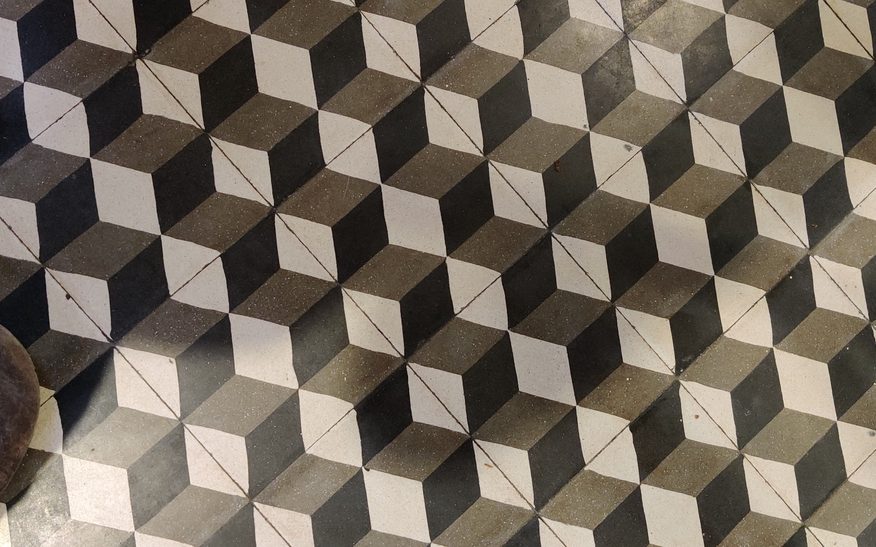
After the war, the flourishing trade came to an end. An era of poverty and deprivation followed.
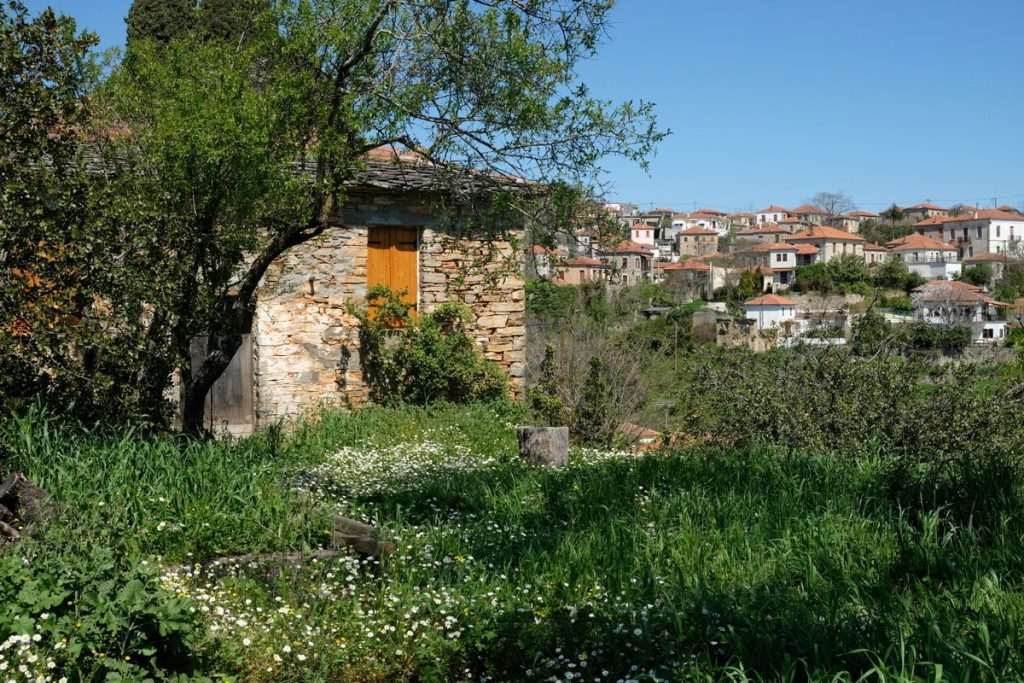
It was not until the 1970s that tourism slowly developed and Pelion became one of the most diverse and beautiful insider tips in Greece.
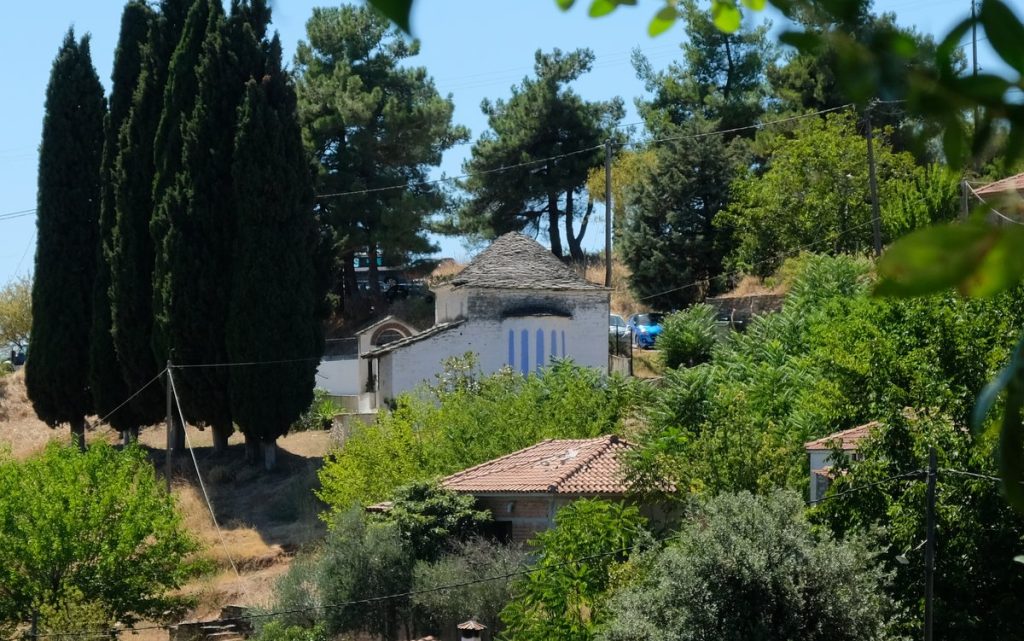
Today Lafkos could be a second home for anyone, who belongs for cosmopolitan humanity, simplicity and nature together. Truman Burbank couldn’t be happier anywhere else than right here.
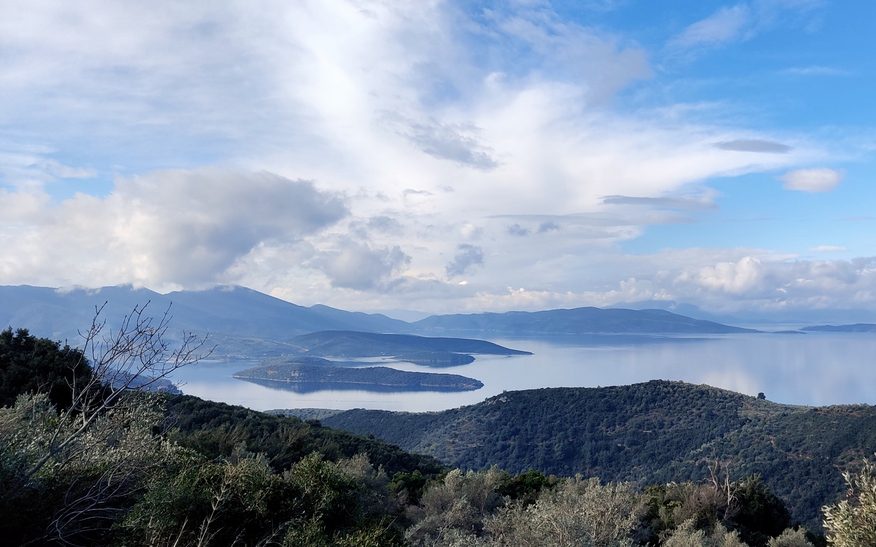
Originality
Once a week, the postman comes to visit the people in the Kafenion. Unfortunately, he mainly delivers invoices.
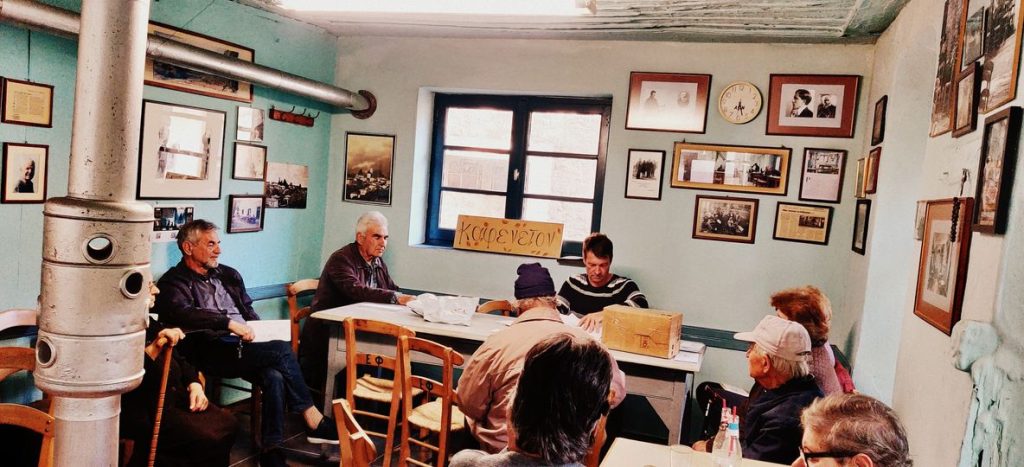
Nevertheless, a welcome pastime during the wintertime, like the Greek coffee twice a day.
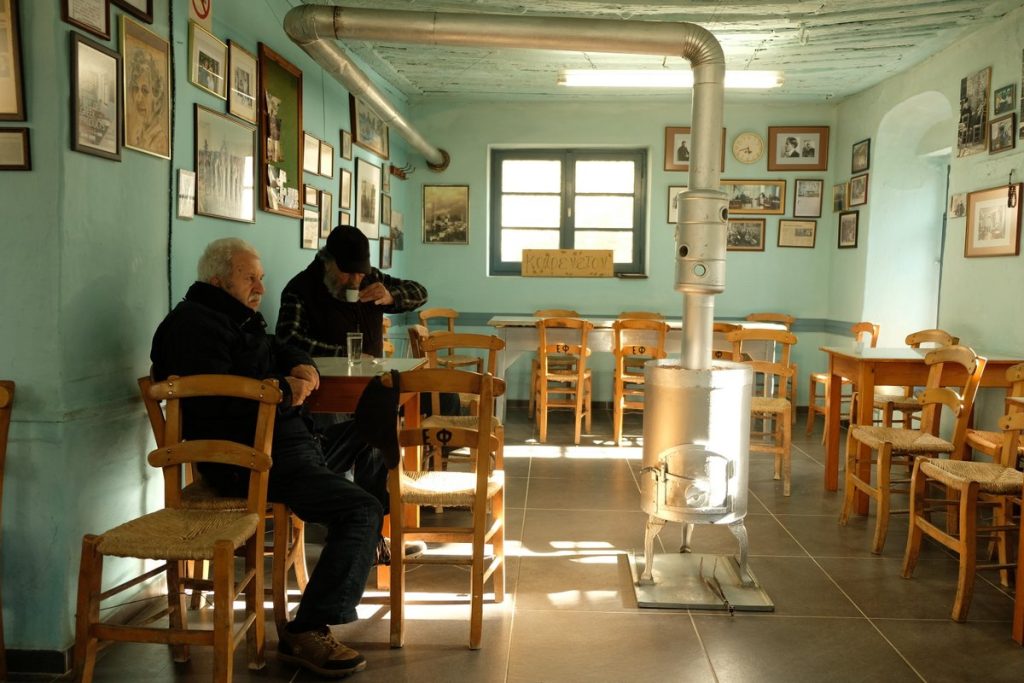
Food
The village is well known throughout the Pelion for its excellent rural cuisine, with many vegetarian dishes.
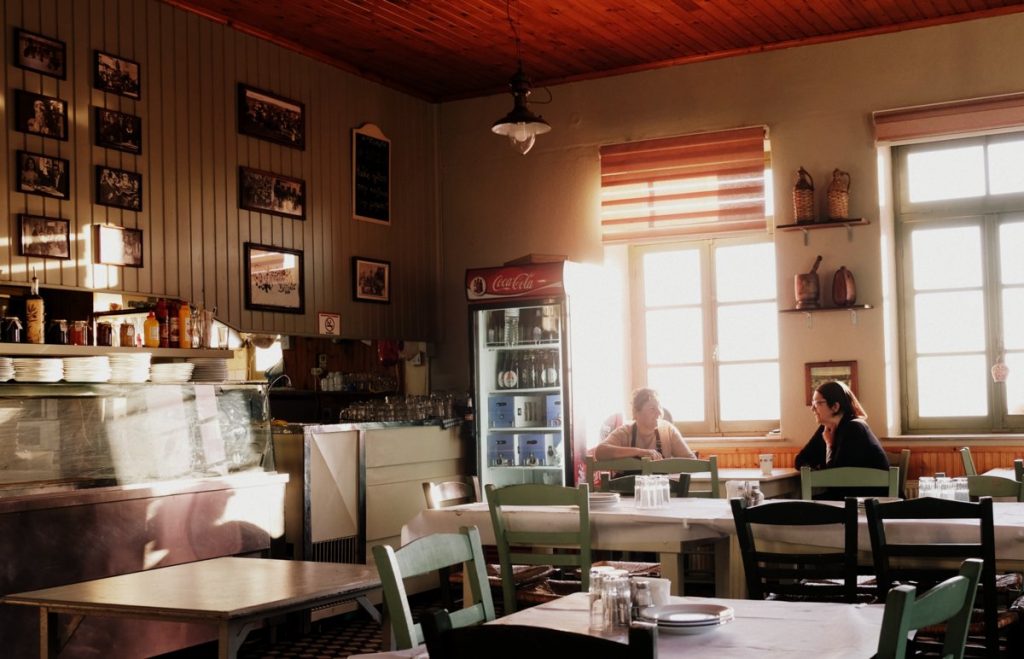
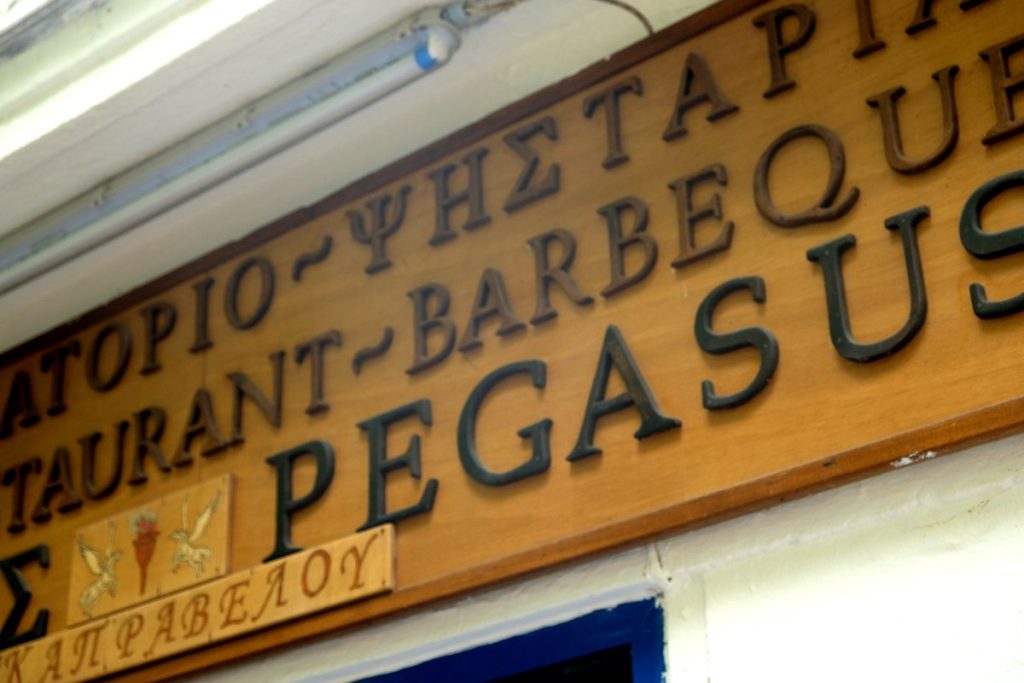
Famous is Spetzofai, but there are so much other delicious dishes like Tsapellinia, Lamb on skewer, or in oil paper, the chickpea purée Fawa with sweet roasted onions or the black-eyed Beans with herbs.
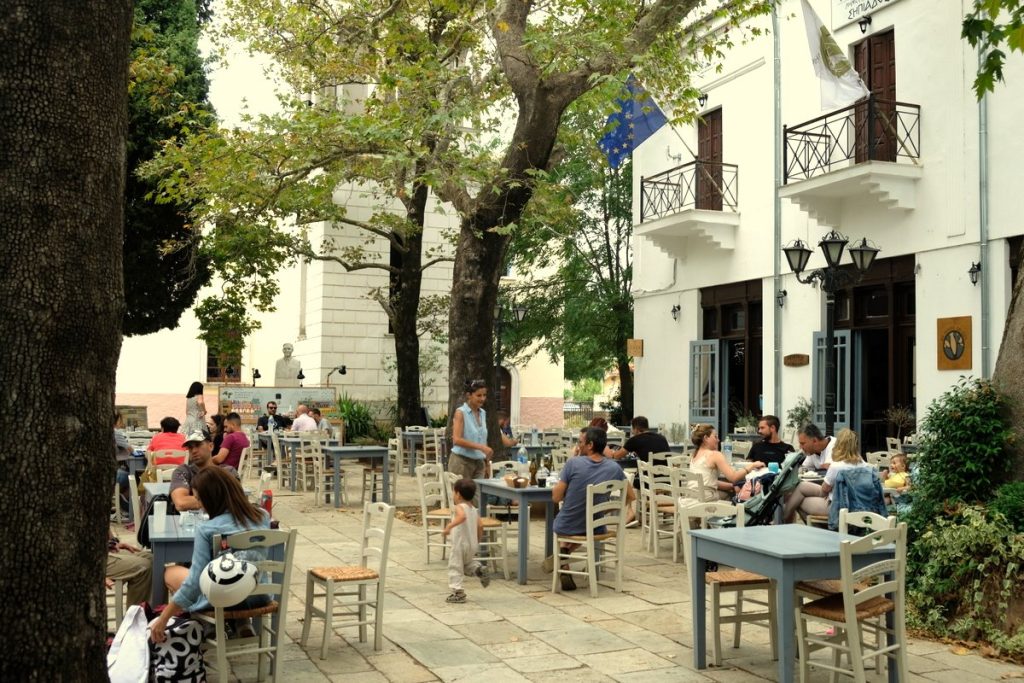
A view meters down, Magda makes the best pita far and wide…
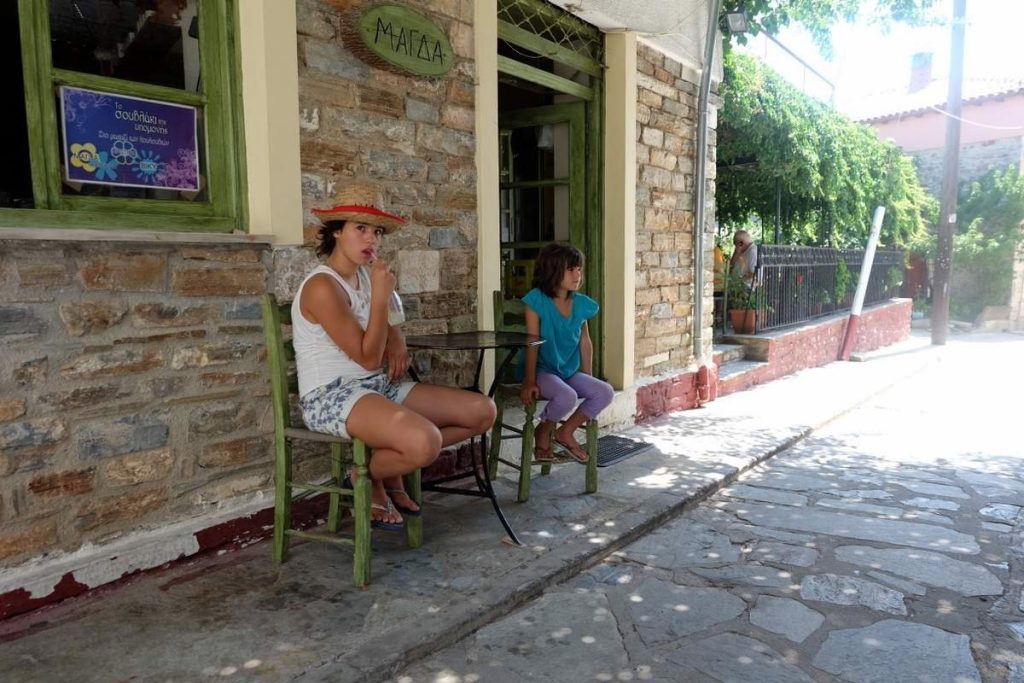
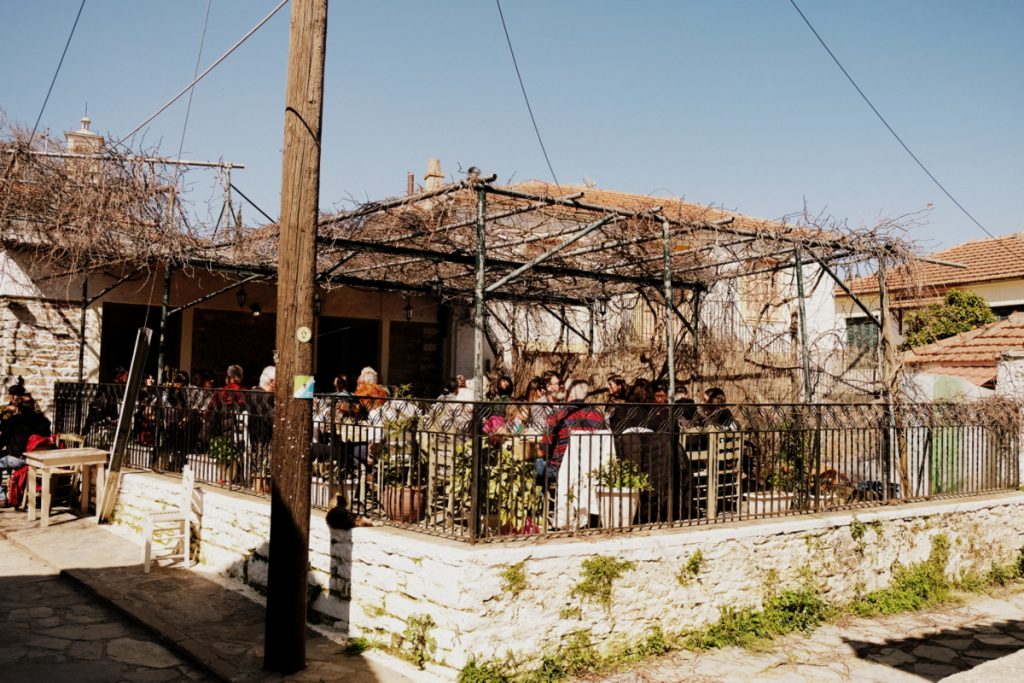
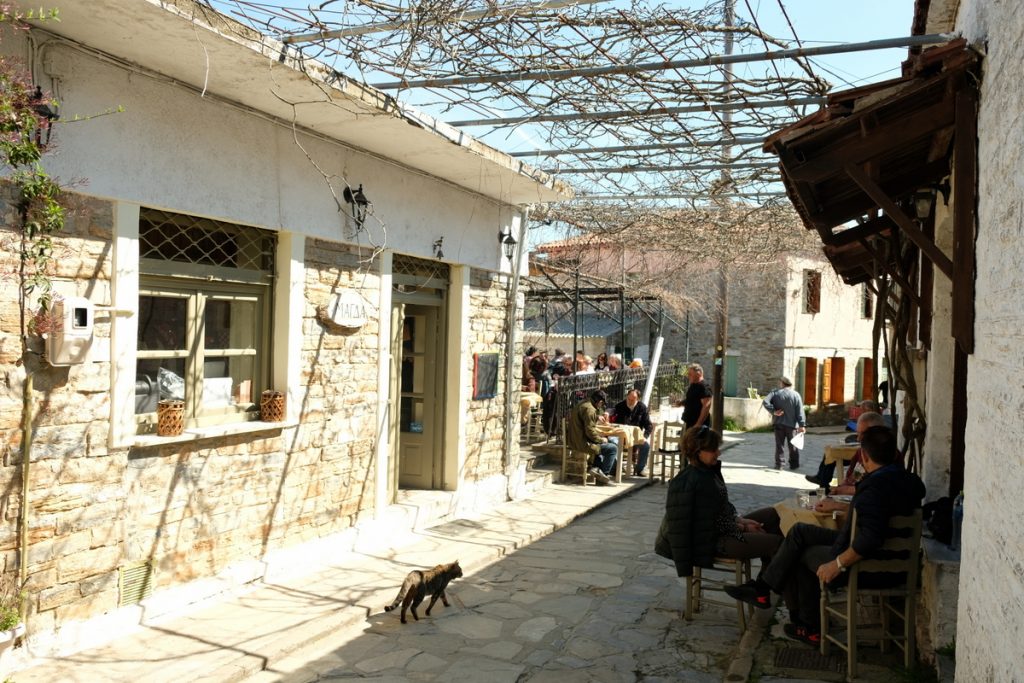
…and Janis roasts his pastries in a wood-burning oven like his father and grandfather and soon his son.
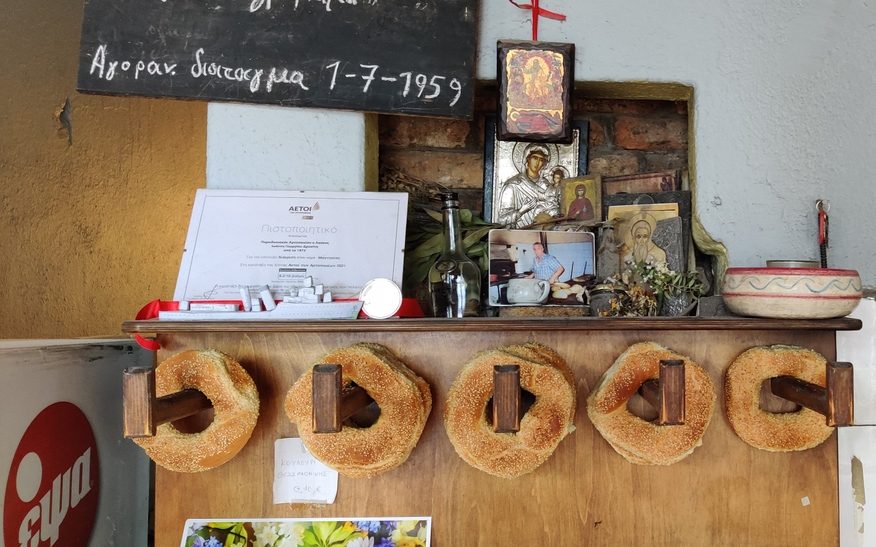
But Janis doesn’t just bake, he also makes music. At night, you’ll find him sitting together with his family or friends in one of the taverns on the Platia, playing a great bouzouki for fun.
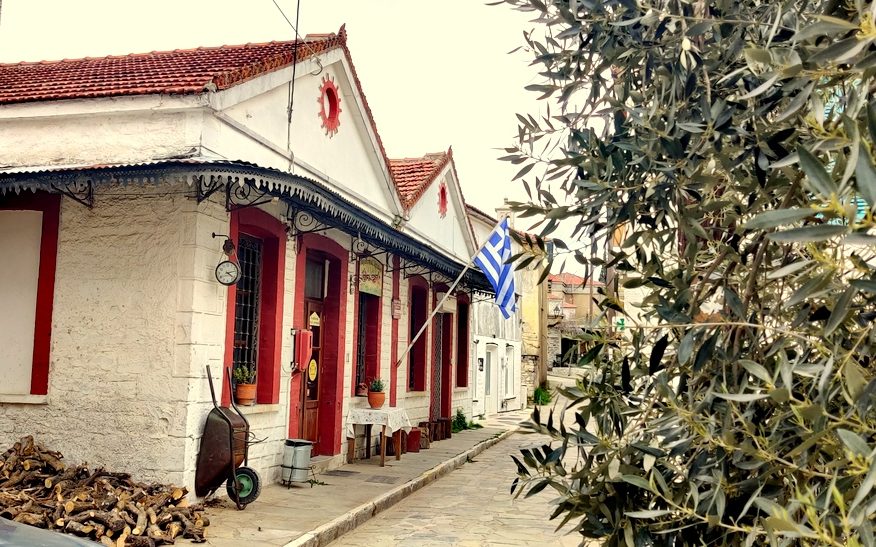
Cultur
Next to the enchanting village square, the marble sculptures of Lavkiotis Thanasis Fampas touch the visitors.
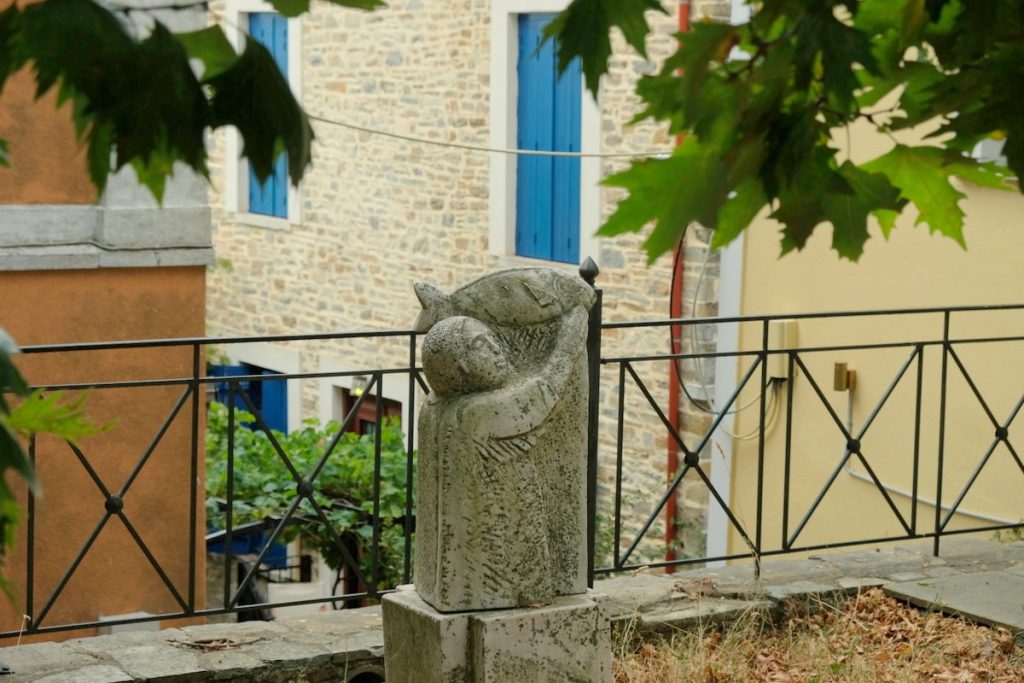
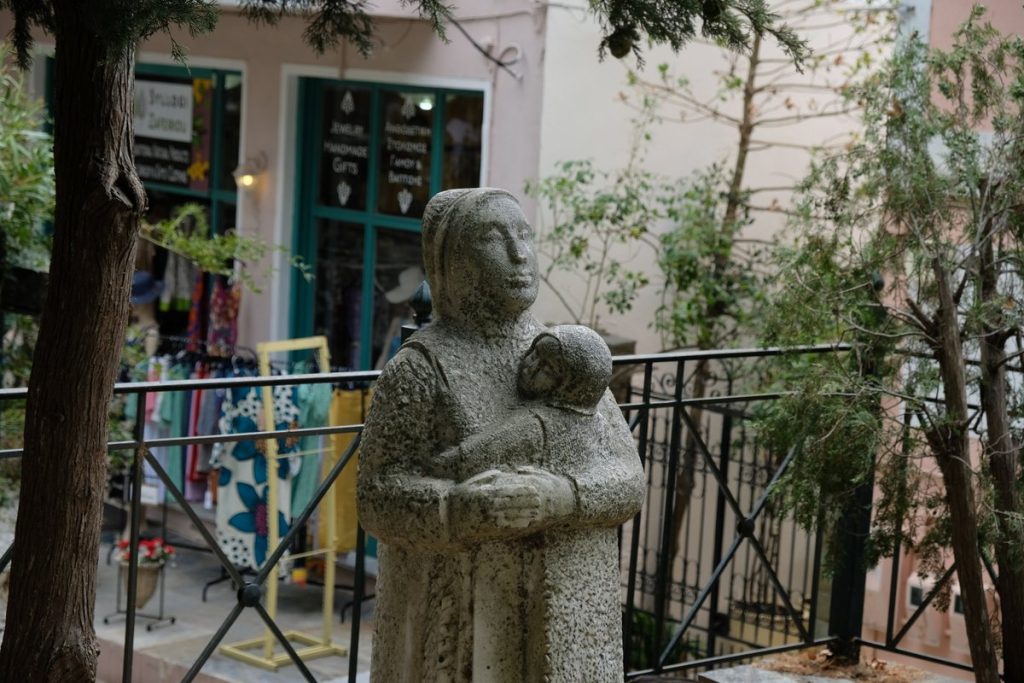
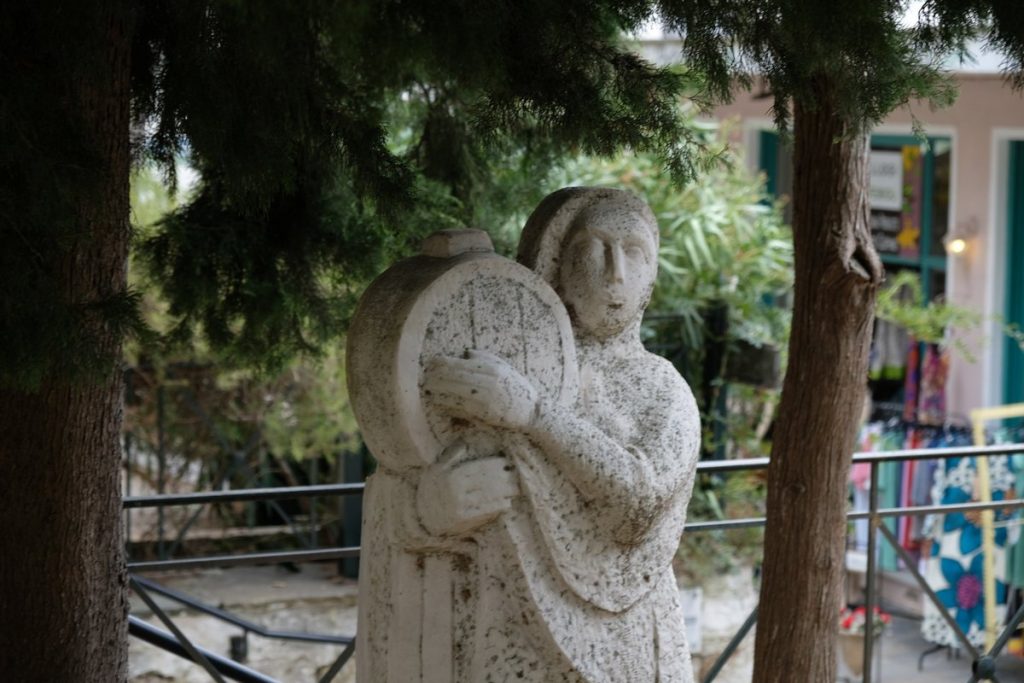
Shopping
Apart from the beautiful museum in memory of the artist, the mini market run by Afroditi and her family provides fresh food and news.
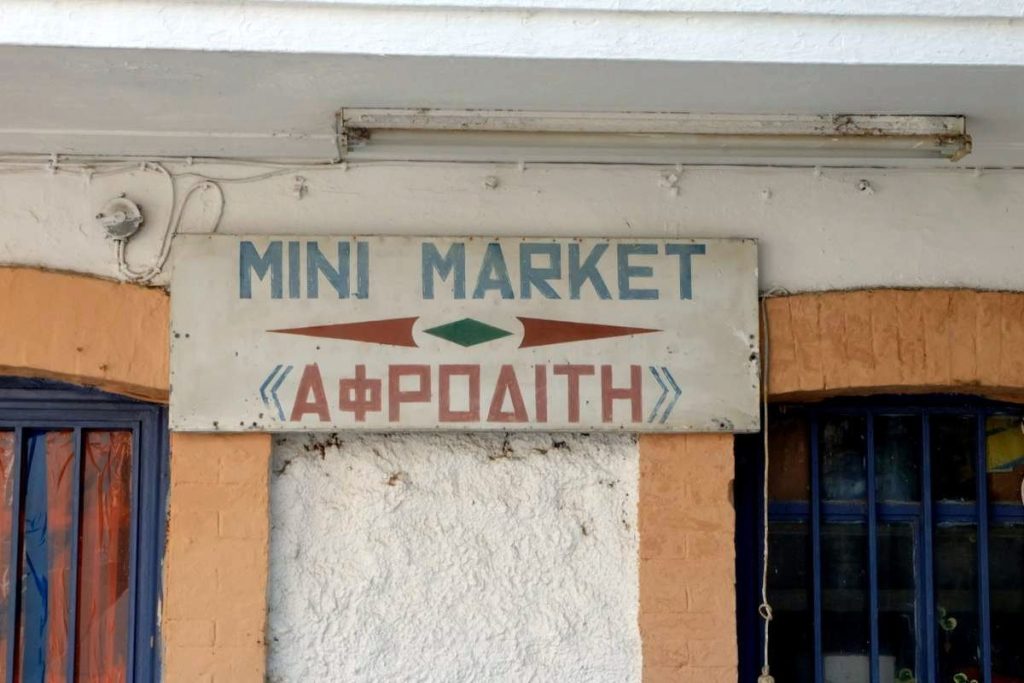
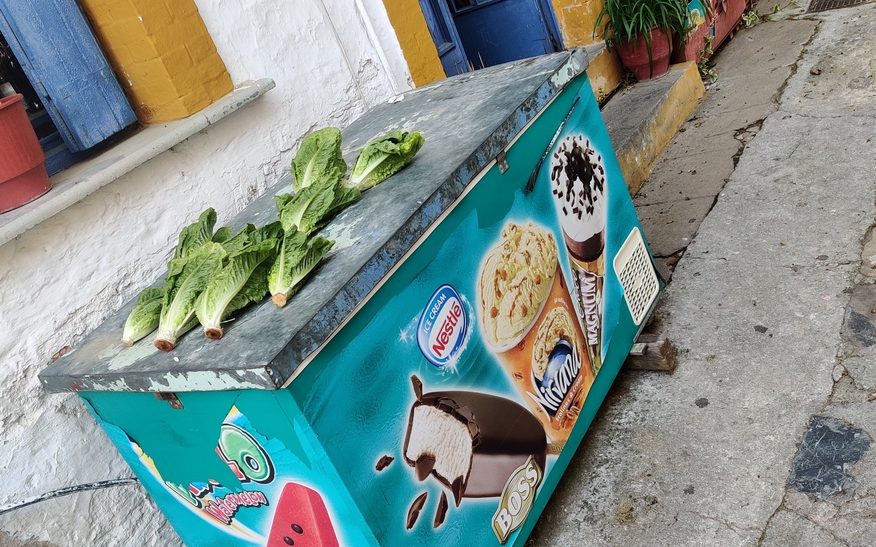
The concessions to tourism are modest. But there’s always a little something to buy.
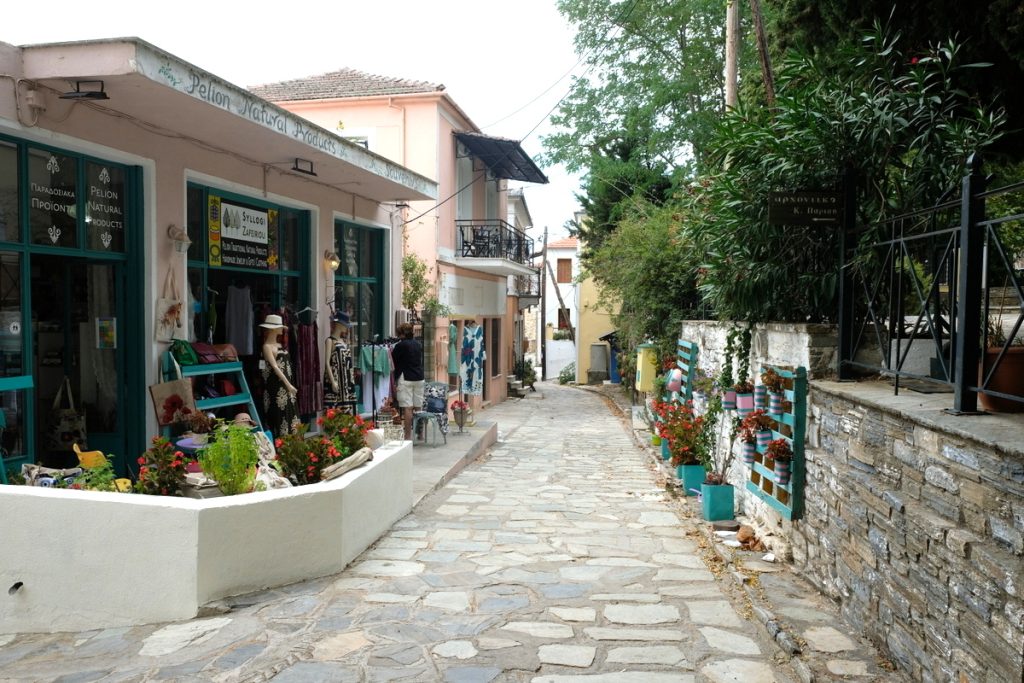
There is even a goldsmith in Lafkos and a store selling clothes and many local products.
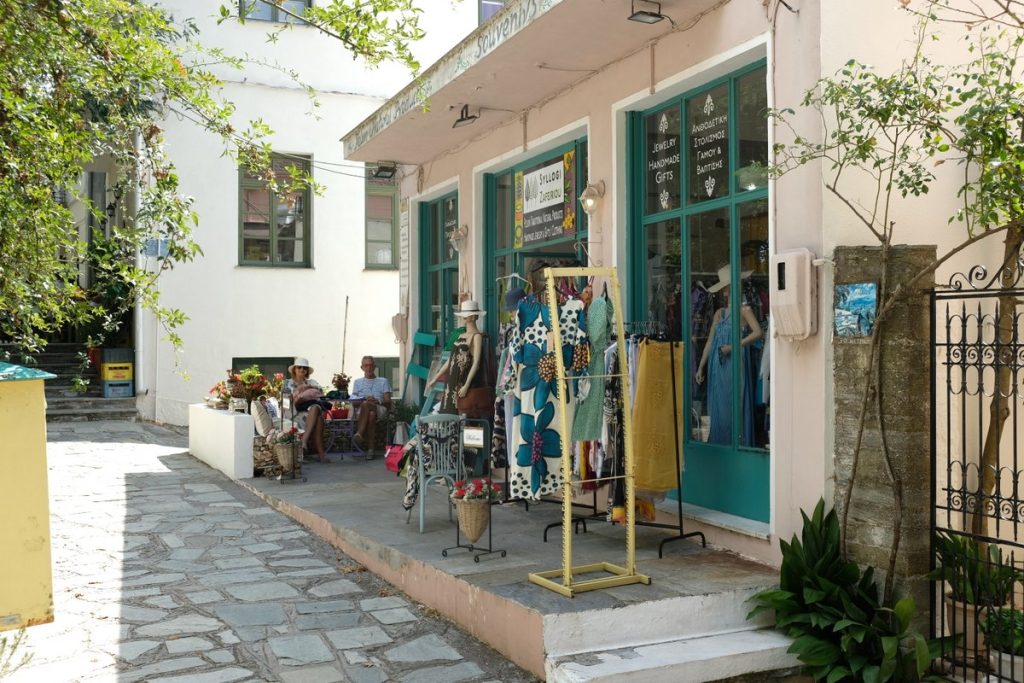
Accommodation
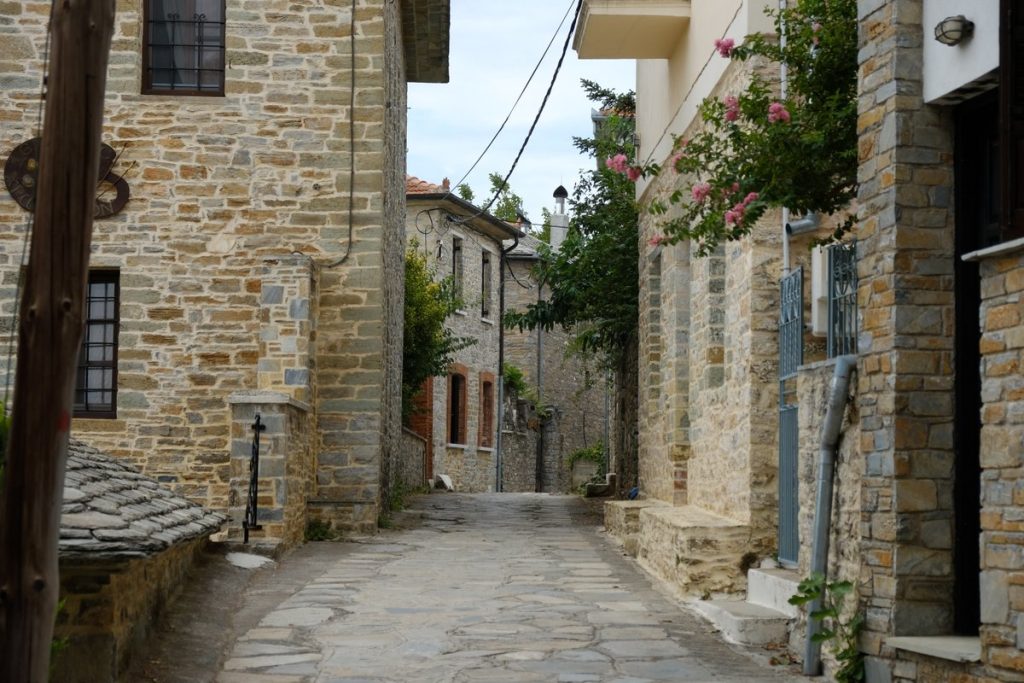
The alleyways invite you to stroll through the old streets, see one of the most beautiful places on Pelion and look for a nice place to accommodate.
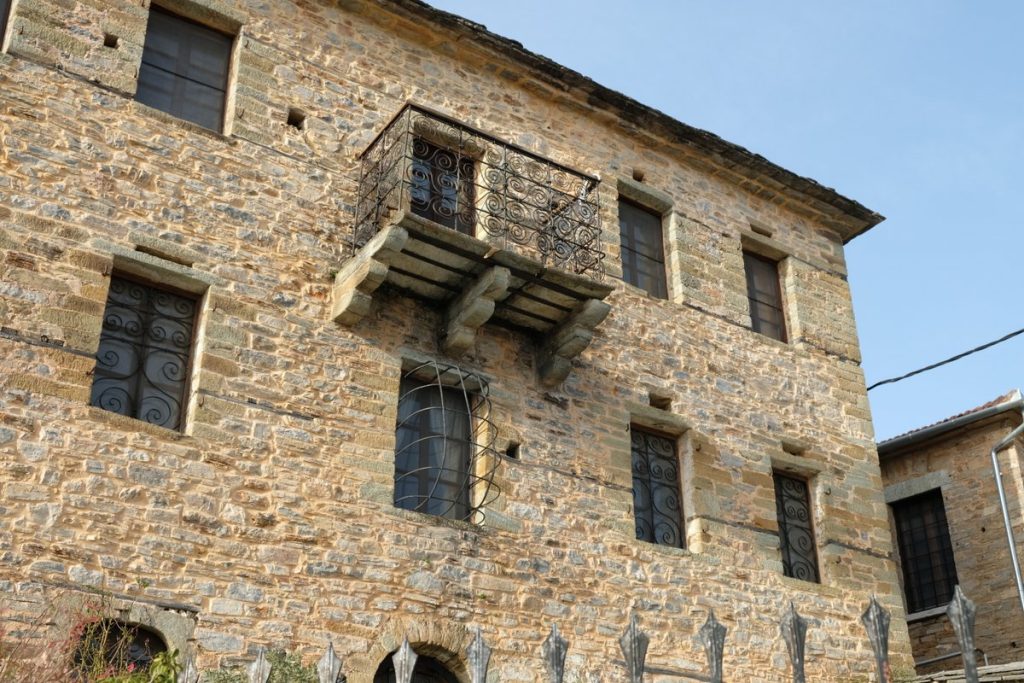
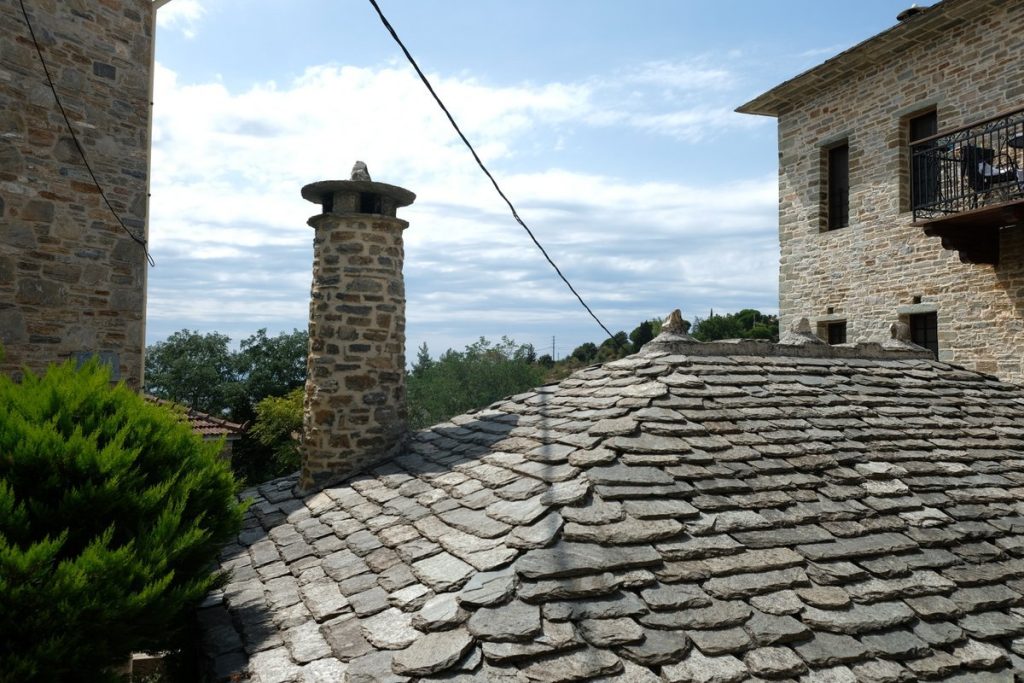
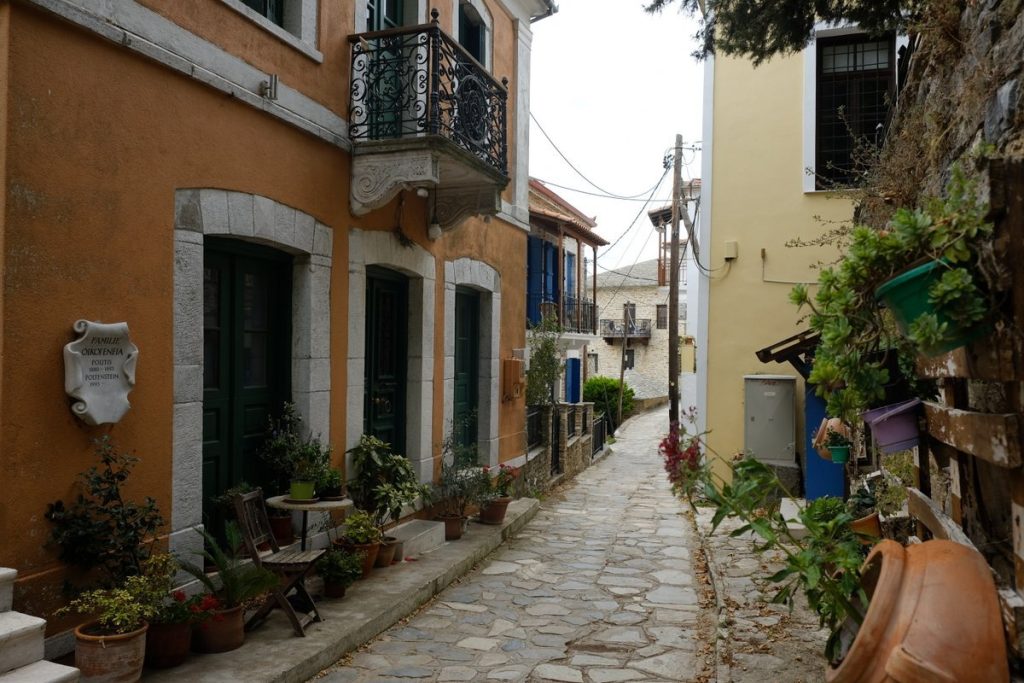
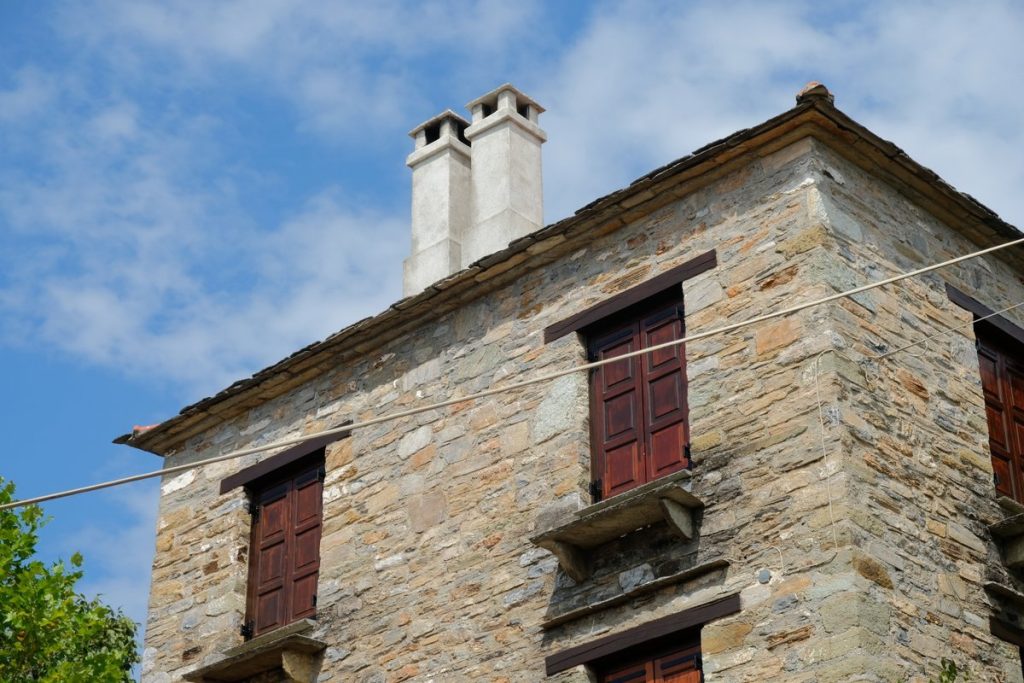
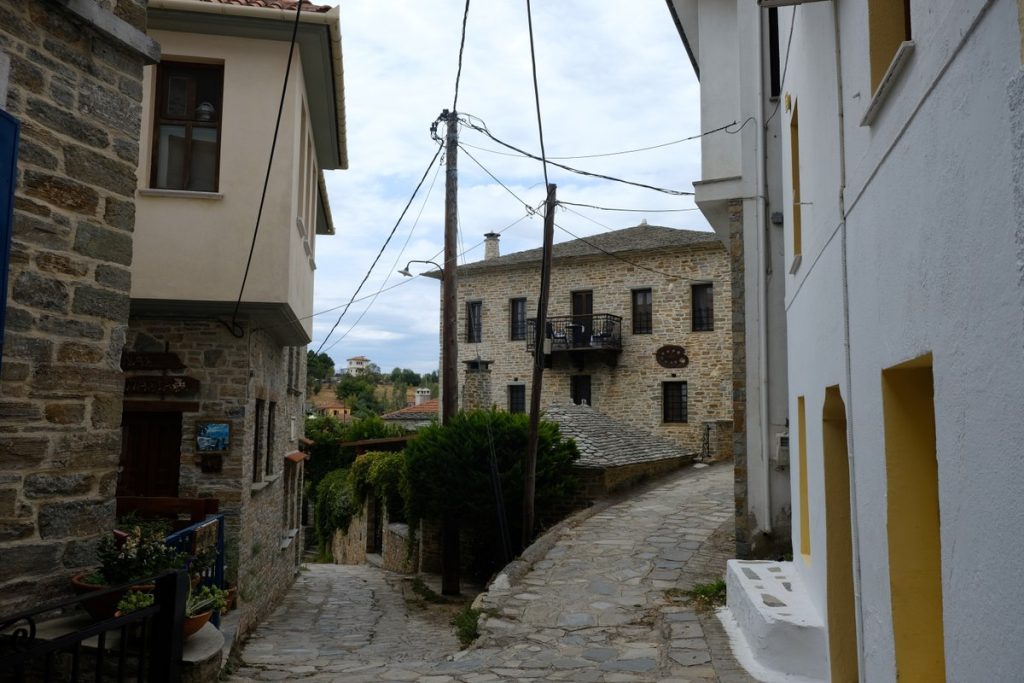
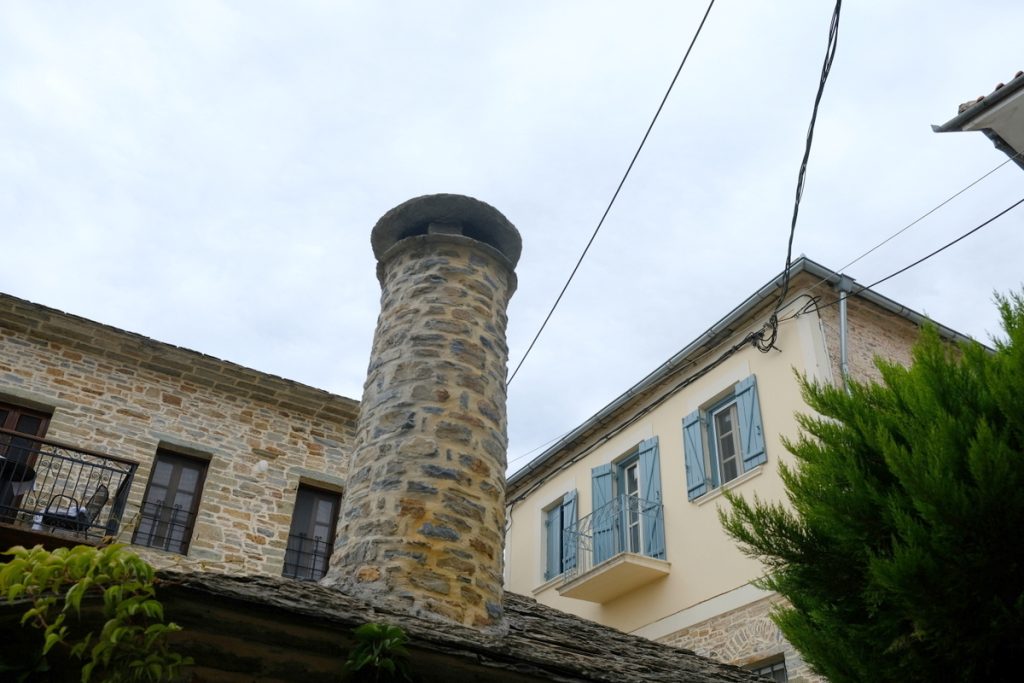
Sport and education
A greeting call, somehow from the Düsseldorf art scene.
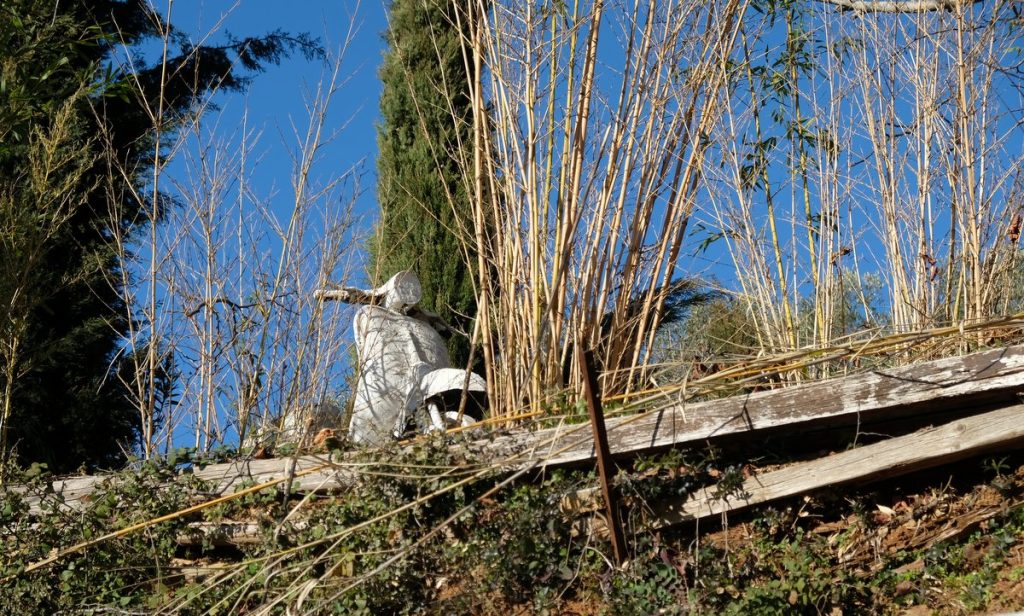
The school building with the sports field open for everybody.
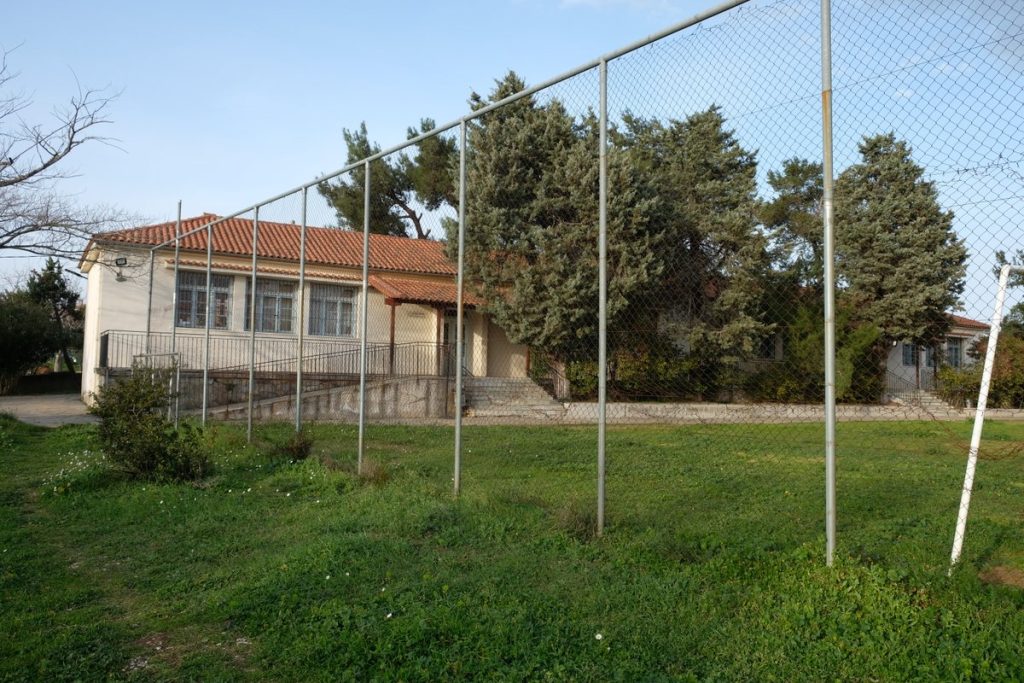
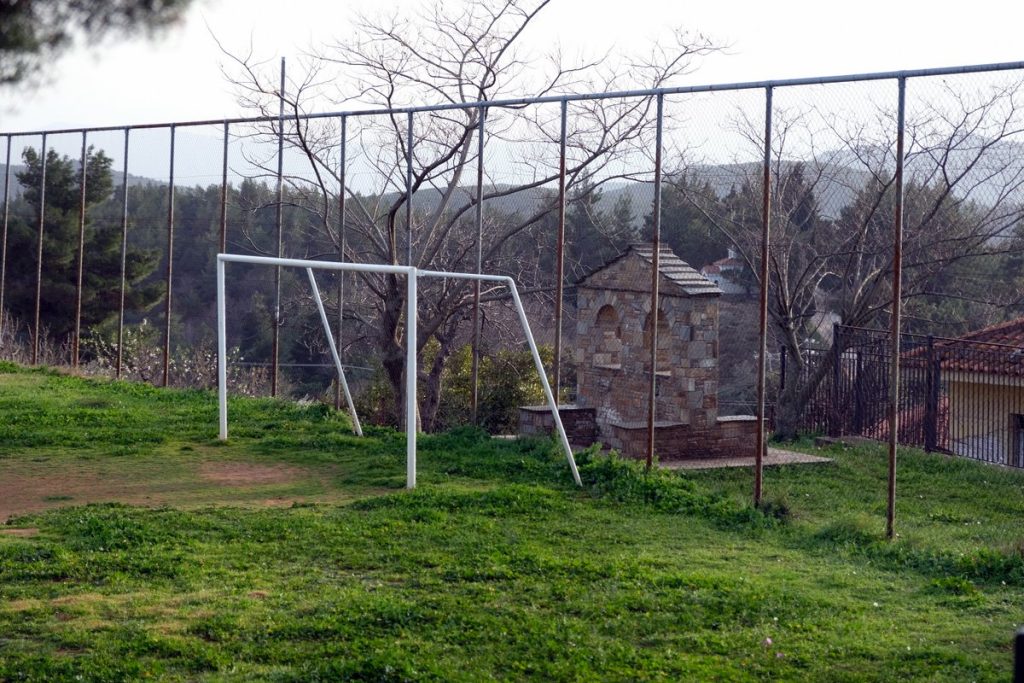
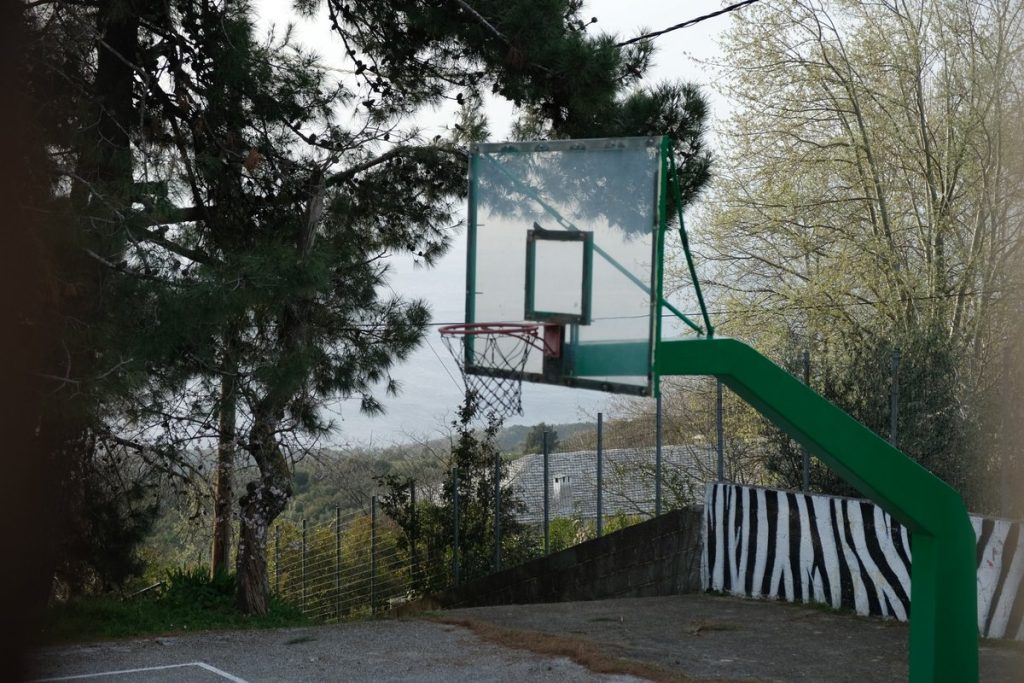
The little village Lafkos is still one of the most authentic places in the Pelion and also in Greece.
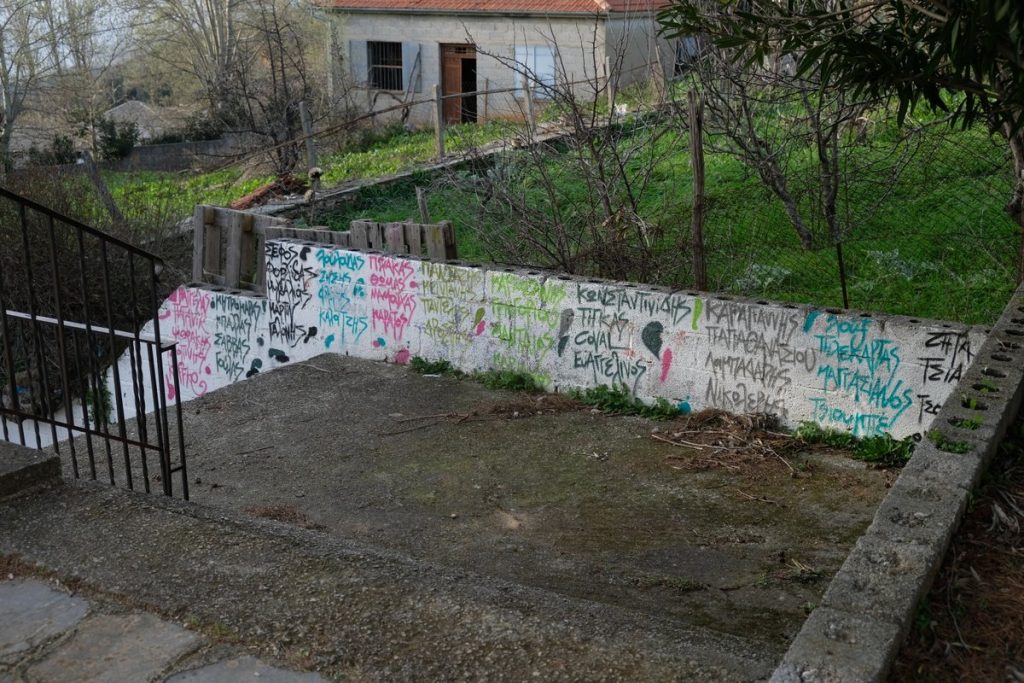
Of course the children prefer to play near the village square in the shade around the church, instead a little further out beyond the school, where the road leads to the sunlit and the road to Milina.
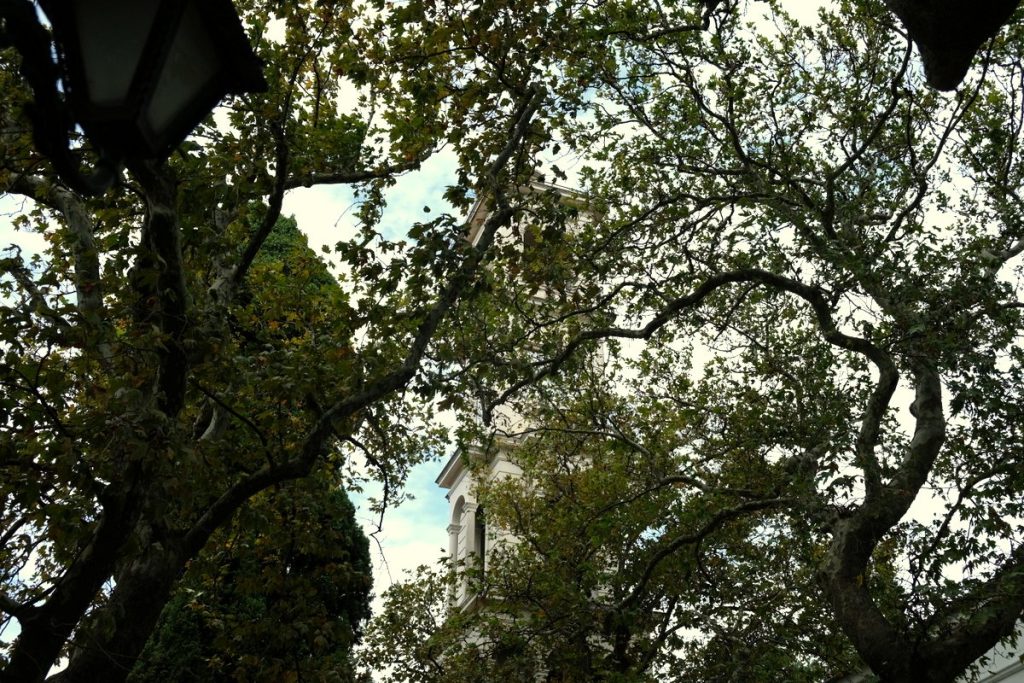
The old port Milina
Even the seagulls here sway more on the water than in the air, and everyone has only one need: to stretch out the legs.
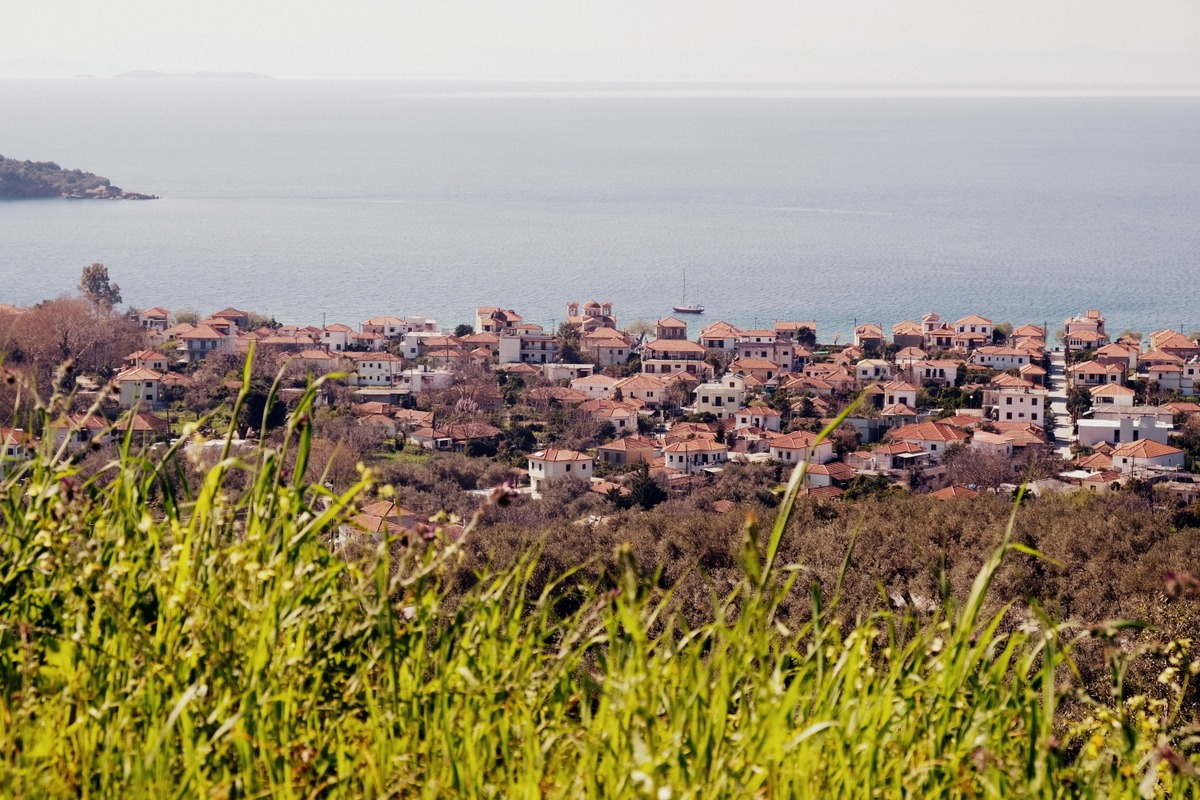
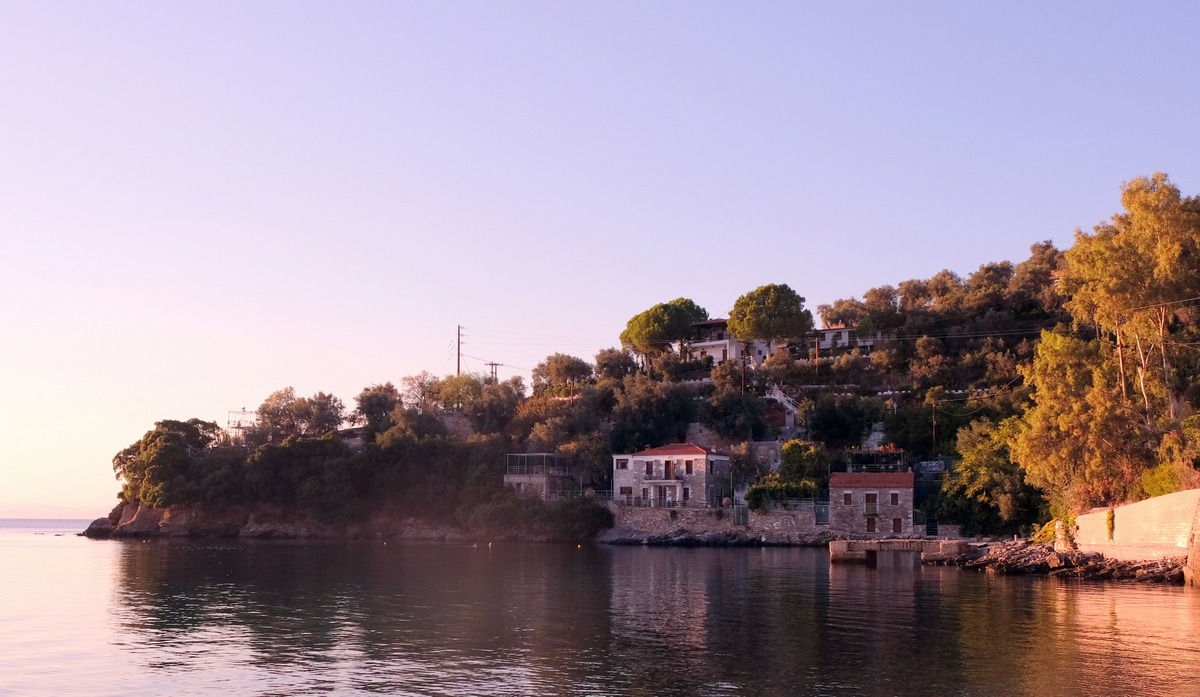
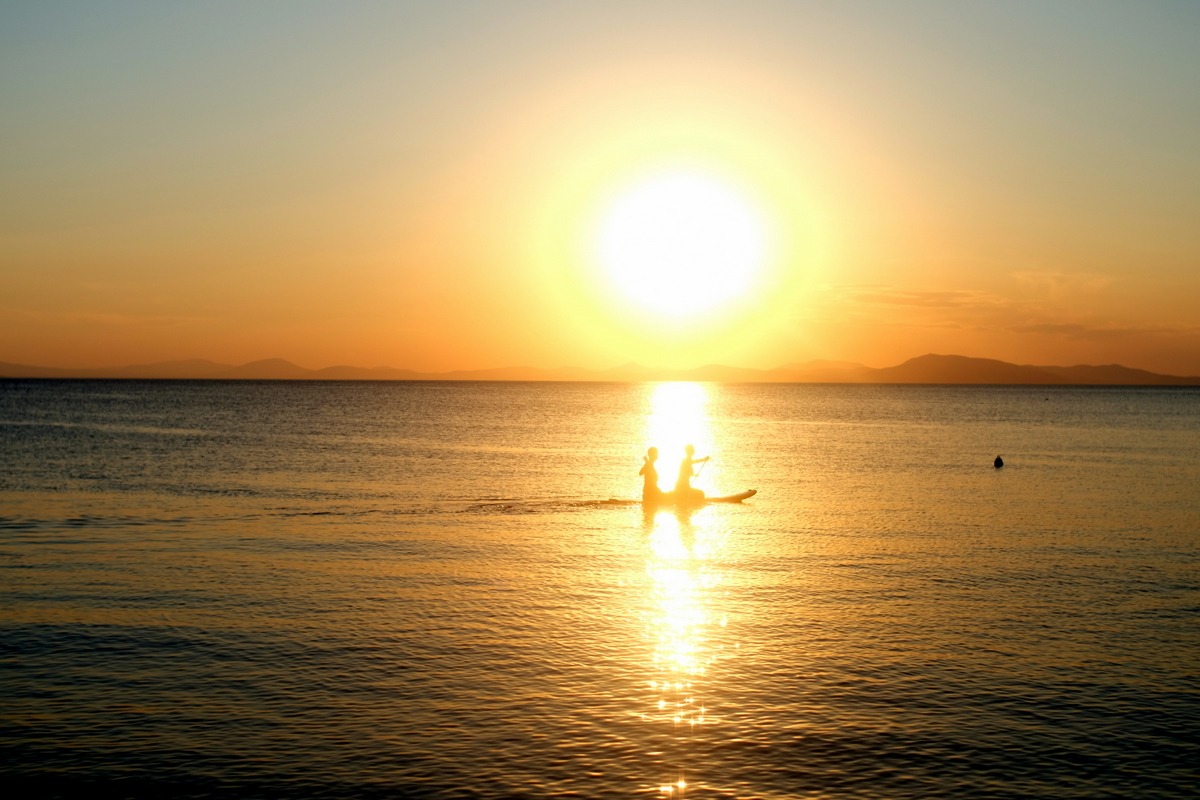
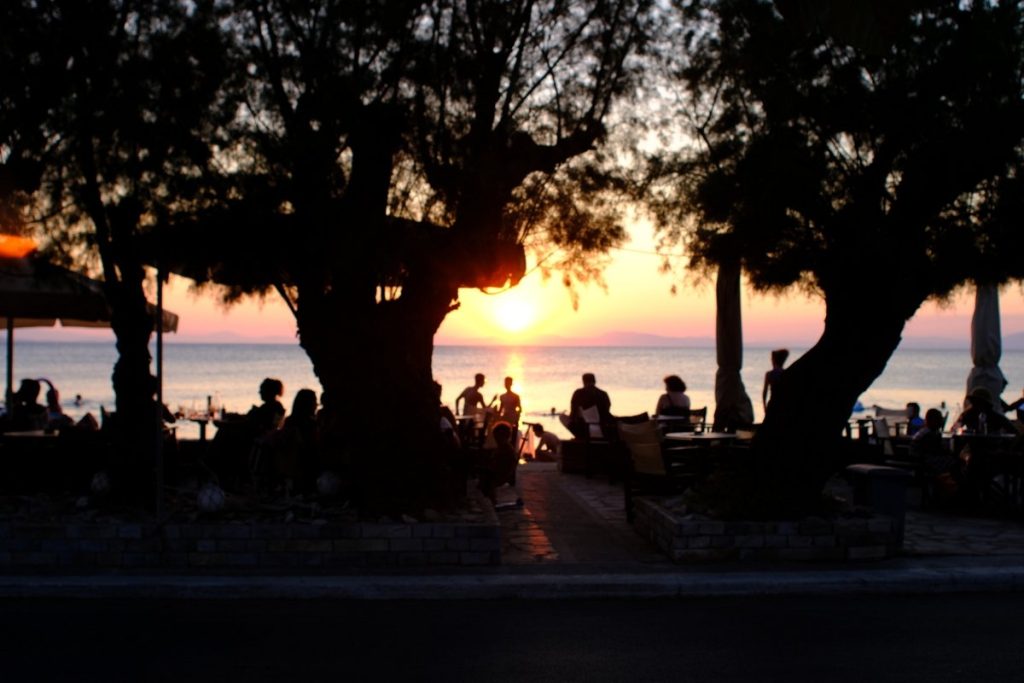
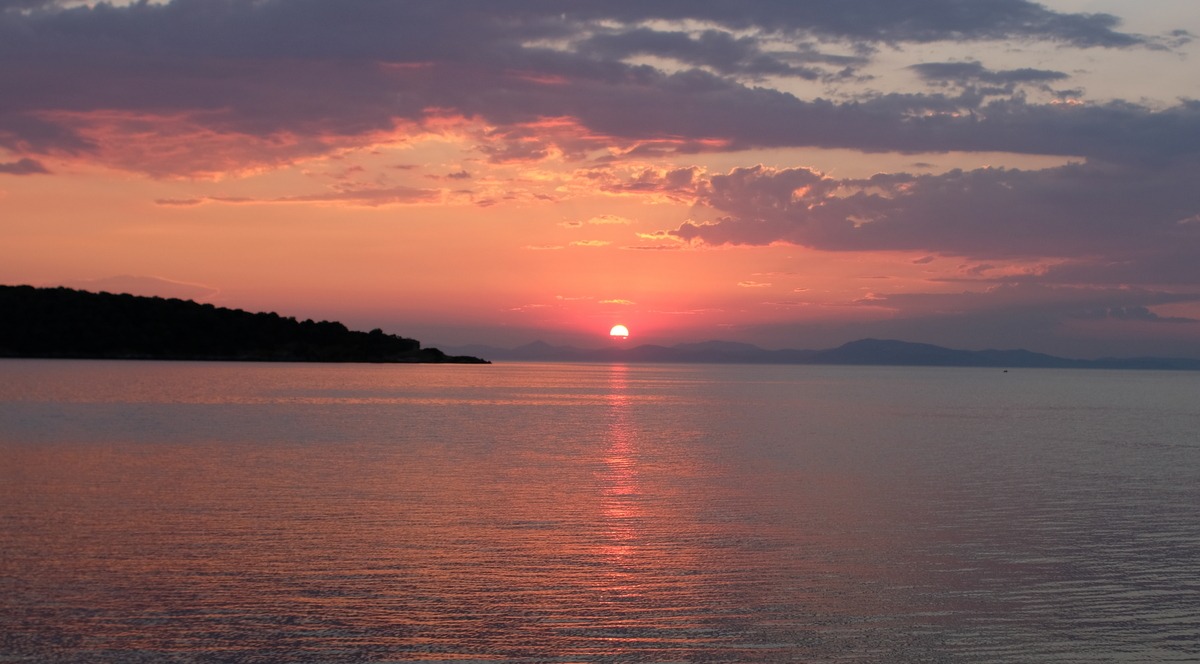
More about our personal accommodation, the lovely village, events, hikes and other tourist excursions like the Pelion train is reachable searching the web or within our personal guide’s. Everything about arriving or booking is here. We are also glad about a message or your contribution in our guestbook.
